#authentic British fossil
Explore tagged Tumblr posts
Photo

British Chalk Fossil Echinoid - Echinocorys scutata gravesi - Santonian Cretaceous, Broadstairs UK
This listing features a high-quality British Chalk Fossil Echinoid, scientifically known as Echinocorys scutata gravesi. This fossil originates from the Santonian Stage of the Cretaceous Period, and was collected at Broadstairs, Kent, UK, an esteemed locality along the southeastern chalk coast of England.
Taxonomic Classification:
Order: Holasteroida
Superfamily: Echinocorythoidea
Family: Echinocorythidae
Genus and Species: Echinocorys scutata gravesi
Geological Context:
Period: Cretaceous
Stage: Santonian (Late Cretaceous)
Formation: Upper Chalk Formation
Depositional Environment: Marine shelf environment. The chalk was deposited in a warm, shallow sea that covered much of what is now Europe during the Late Cretaceous, composed largely of coccolith-rich calcareous ooze accumulating slowly on the seafloor.
Morphological Features:
A slightly elongated, sub-rectangular to domed test (shell), differing from other Echinocorys morphotypes by its proportion and surface profile
Distinct bilateral symmetry with sunken ambulacra and finely tuberculated surface
Well-defined periproct and peristome features with posterior sloping
Adapted for semi-infaunal life, often found partially buried in carbonate-rich sediment
Notable Significance:
The gravesi morphotype represents a distinct form within the Echinocorys scutata species group and is notable for its specific stratigraphic and geographic distribution.
Used in biostratigraphic zonation and environmental reconstructions of Late Cretaceous chalk seas.
Locality:
Broadstairs, Kent, UK – an important fossil site within the English Upper Chalk exposures, known for producing well-preserved echinoid fossils.
Presentation & Authenticity:
All of our fossils are 100% Genuine Specimens and come with a Certificate of Authenticity. The listing includes actual photographs of the exact specimen you will receive. Please note that the scale cube = 1cm, and full sizing is visible in the photo provided.
This is a carefully chosen, scientifically significant fossil specimen, ideal for collectors, educators, and enthusiasts of British palaeontology and marine Cretaceous life. A unique glimpse into Earth’s ancient seas from over 85 million years ago.
#British fossil echinoid#Echinocorys scutata gravesi#chalk sea urchin fossil#Santonian chalk echinoid#Cretaceous echinoid fossil#fossil from Broadstairs Kent#UK fossil echinoid#authentic British fossil#chalk urchin Kent coast#certified echinoid fossil#echinoid species gravesi#rare fossil urchin
0 notes
Text

In 1912, an amateur archeologist named Charles Dawson claimed that he had discovered the "missing link" between apes and humans, presenting a reconstructed skull as his proof. He claimed that a workman at a gravel pit in Piltdown had given him the pieces.
Arthur Smith Woodward, of the National History Museum, hypothesized that the skull belonged to a human ancestor from 500,000 years ago. This discovery was announced at a Geological Society meeting. The find was given the Latin name Eoanthropus dawsoni ("Dawson's dawn-man"), and became known colloquially as Piltdown Man, after its location.
Nearly as soon as it was announced, some scientists expressed their doubts as to its authenticity. Gerrit Smith Miller, Jr., for example, said in 1915 that "deliberate malice could hardly have been more successful than the hazards of deposition in so breaking the fossils as to give free scope to individual judgment in fitting the parts together." As the decades passed, more and more scientists noted that Piltdown Man was inconsistent with the path of hominid evolution as demonstrated by fossils found elsewhere in the world. Nevertheless, the discovery was hailed, and a marker was erected at the site of the claimed discovery.
Finally, in 1953, 41 years after it was announced, Piltdown Man was proven to be a forgery. The supposed fossil was shown to be assembled from a human skull of medieval age, the jaw of an orangutan, and the teeth of a chimpanzee. The bones were made to appear older by staining them with an iron solution and chromic acid. Further, examination under a microscope showed that the teeth had been filed down to appear more human-like.
The Piltdown Man hoax succeeded for so long because, at the time of its discovery, scientists believed that the development of the large modern brain preceded changes in the human diet, and the find was consistent with that hypothesis. Stephen Jay Gould argued that nationalism and cultural prejudice also played a role, as it seemed to place the earliest humans in Eurasia and the British Isles, rather than in Africa.
The identity of the forger is not authoritatively known; however, as other archeological hoaxes of the time have been traced to Dawson, he is the prime suspect. Others have suggested that Dawson may have had a collaborator, with some pointing to Sir Arthur Conan Doyle as a possibility. Conan Doyle is said to have been involved because of his resentment that the scientific community mocked his belief in spiritualism; further, they point to a passage in his novel, The Lost World, where he alleged that creating phony fossils was no more impossible than forging a signature.
In recent decades, it has become fashionable for evangelical Christians to point to the Piltdown Man hoax as proof that science cannot be trusted to trace the origins of human life, and thus point to the Bible as a superior explanation. There is just one small problem with this argument: Since no one associated with Piltdown Man had ever admitted to any chicanery, 100% of the evidence against Piltdown Man comes from science; thus, if science cannot be trusted, then Piltdown Man must be true.
1 note
·
View note
Text

N's pokemon team was more difficult. There aren't any sort of reading/book-themed pokemon unfortunately and water types are mostly out. Tech-themed pokemon are out.
This team is a random non-tactically chosen assortment and would drive A insane just like N does with their library.
Sewaddle - this would be a perma-baby pokemon and basically be a purse dog for N. They are a grass type and canonically like wearing clothes.
Ogerpon - Canonically a precious orphaned pokemon who wears many masks and wants to be part of human society but has been alienated from it. Also grass type. Kind of skittish so it would be fine with N's overprotectiveness. Perfect for N.
Cradily - Ancient fossil pokemon, also a grass type, fits the aesthetic of the rest of the team.
Reuniclus- First, it's cute af. Second, it's line is cell themed. Third, it has psychic powers.
Polteageist- This polteageist would be authentic, and also shiny because N is a Material Gorl (gender neutral). Throwback to book 1 when N said they prefer tea, and generally referencing N's willingness to consume human food (but only the hoity toity kind). Gives cozy antique vibes. Galarian, which is based on the UK for our British-Persian vampire.
Decidueye - Final evolution of Rowlett, one of the starters Sera suggested. Owls are more associated with wisdom and learnedness, so it gave me more N vibes than the Bulbasaur line.
I would like to discuss…Unit Bravo pokemon teams.
21 notes
·
View notes
Link
Nahan is the capital of Princely Sirmour State, Himachal Pradesh. It is a beautiful town situated in the midst of the rich green surroundings of thick timberlands and is laced with green valleys, little waterway streams, and a charming environment. Located in the lower regions of the Shivalik Ranges, Nahan hill station is a stunning spot for an end-of-the-week outing with loved ones but not extremely famous. Also, no other place offers serenity and culture in the same place. Nahan is among the Best Places to visit near Delhi, which will fulfill your need for vacation and fill your soul with a calming sense.
Do meander down this quiet paradise that is really a brilliant escape from city life.
Visit Chaugan, the shopping center street of Nahan that is a solitary spot bustling with tourists. Go for a walk towards the Villa Round, which is encircled by Pine trees and home to birds and Monkeys! Walking towards the Hospital Road would find yourself looking over ruins of old buildings and some frontier structures that actually stand tall. Standing cheek-by-cheek is Ranzor Palace, whose old stable is currently a cinema lobby.
In the evening visit the Rani Tal (worked in 1898) that is brimming with Lotus blossoms and the nursery surrounding it makes for an extraordinary cookout place as well.
Different spots to be visited include Shanti Sangam and Tallon that offer delightful normal surroundings, an authentic Miyan ka Mandir and a Gunnu Ghat. Relatively few know however the GIFTS (Indian Special Forces Training School) is additionally situated at Nahan hill station.
It’s typically more popular as a visit for individuals traveling to Paonta Sahib. But Nahan is a pleasant escape for those craving for some very time and it doesn’t disappoint.

Places That Are Close to Nahan, and A Must Visit:
Jamta: is found 13 kms from Nahan and offers a tremendous perspective on Nahan Town. Explore Jaitak Fort arranged straight up on the slopes on the Nahan-Dadhau Road. You could decide to take an outing lunch or eat at close by beautiful Resorts in Himachal like Sirmour Retreat.
The notable Jaitak Fort was worked by the Sirmour kings and remade by Gurkha pioneer Ranzor Thapa, who faced an urgent conflict with the British here in 1810. There’s a conflict dedication in Nahan hill station at Pucca Tank to the European troopers who kicked the bucket fighting this conflict.
Renuka Lake: The delightful Renuka Lake is located just 35 kms from Nahan. It has an outline of just about 3 kms and is one of the biggest lakes in the territory of Himachal Pradesh. The lake is molded like a reclining ladies’ body and is taken care of by River Giri, underground springs, and rainwater, and is home to an assortment of marine life.
There is an arrangement for paddle boating in the lake and you can even stroll along the all-around cleared walking zone. Encircled with a shelter of rich green slopes and sensible thick woods, this spot is definitely an extraordinary end-of-the-week escape from New Delhi, Chandigarh, Dehradun, and Ambala.
You can even take a trip of 8 Kms up ‘Jamu Peak’ that has a little sanctuary and offers a wonderful perspective on the lake and surrounding slopes.
Renuka Wildlife Sanctuary: is otherwise called ‘Abhayaranya’ and is found right across the lake or you can take a 2 km drive to arrive at it.
This place is located in the deciduous timberland zone, the Renuka Wildlife Sanctuary likewise has a Zoo that has Asiatic Lions, Spotted Deer, Lion-followed Macaques, ‘Nilgai’ Methuen, Barking Deer, Himalayan Black Bears, and in excess of 300 sorts of Migratory Birds.
Adjoining the zoo, a shielded van enters the huge walled-in area allowing you a nearer look at the lions within. The Lion Safari draws in numerous and you make certain to identify a couple on the excursion!

You can likewise remain here at the Fossil park hotel that is found right on the Lakeside and offers an all-encompassing perspective on the surrounding slopes.
Also Read:- How to Choose the Best Hotels in Himachal
Trilokpur Temple: is situated a ways off of 23 kms from Nahan hill station on Kalka-Ambala Highway and can be visited while reaching Nahan. ‘Trilokpur Temple’ was built in 1573 by Raja Dip Prakash and is given to Goddess Mahamaya Bala Sundri.
According to local people, a Pindi (consecrated stone) of the goddess was unearthed and later installed here. Some say that it had shown up in a pack of salt, bought by a nearby broker who then, at that point, asked the King to construct a sanctuary. Exceptionally capable bricklayers from Jaipur were called to fabricate the sanctuary.
1 note
·
View note
Text
Book Recommendation #3
Haven't done one in forever but I read 10 books in May and June so I need to share a few 💖
They Came to Baghdad by Agatha Christie
I would like to preface this by saying I've almost completed reading all of Agatha Christie's novels and this one is by no means the best one she has written but it is a very unique novel by Christie.
I don't know how much the average person knows about Iraqi history but the 2003 war was not the first time Iraq was occupied (like not by a long shot, Baghdad fell more than 15 times over the course of history before 2003).
However, it is important to be aware that between 1920 and 1932 Britain occupied Iraq, this lead to things like the initial creation of Kuwait as a region protected by the British, it also lead to huge depressions and famines in small cities and villages in Iraq. One of the biggest outcomes of this occupation was that most fossils and artifacts and other items excavated in Iraq during, before and after the occupation in Iraq were stolen by the British and now fill their museums, this plays a role in the book though it is minor.
Now that I have addressed this we can talk about why this book is so significant (in my opinion).
I am from Iraq, I have been to Baghdad multiple times in my life and even though I've only seen it post-2003 I still love Baghdad immensely. There is a river, the Tigris, that runs through the city center and there are huge gardens and (even though the air is dusty a lot of the time) it smells very fresh on most day.
Being from Iraq I've read a lot of poetry and books by Iraqi authors and Iraqi authors know how to romanticize a place very well (romanticize here meaning that they make the place seem like this romantic getaway/Paris-esqu place to visit). Reading about Iraq and Baghdad from their perspective makes it seem like the most romantic place in the world (and it can be if your open to learning about the country and its history).
Christie is the first western author I've read who has romanticized and beautified Baghdad and Iraq (in writing specifically) the same way Iraqi authors do and it was so refreshing and validating to read this book. She takes jabs at people's hygiene and certain habits that Iraq men have but it is all very authentic and comes from a palce of personal experience.
Christie lived for a time being in Iraq during the 20's and her second husband was a archeologist who worked in Iraq, she's written two books set in Iraq (They Came to Baghdad being one of them) and both she has described as being a bit of an ode or a nod towards the beauty of the country and how she was able to find love and heal from her first marriage which did not end well in Iraq.
They Came to Baghdad follows a girl who falls in love with a man she meets in England, she finds out that the man is traveling to Baghdad and so through a stroke of luck she acquires tickets to get to Baghdad to find her lover. Before she can do that a spy dies in her hotel room and she is pulled into this conspiracy and plot that is intended to destroy a peace summit that will take place in Baghdad within the following weeks, most of the important world leaders will be present for this peace summit and so the security in the city is very tight. The book is set between 1948-49 which is right at the beginning of the Cold War, this means that soviet leaders and American leaders will be present and this young woman is tasked with trying to solve the mystery of the dying spies last words in order to stop a huge plot that might result in the death of thousands of people and the complete destabilization of the world.
There are a lot of plot twists and turns in the book and through it we come to know our main character very intimately and watch her as she deciphers the difficult situation she is in and tries to figure out who she can and can't trust.
My favorite quote from the book is in reference to the people who might die in war, the simple realization that the people who matter most but are often over-looked when a 'greater cause' is being achieved, all the normal people who work normal jobs and go about their day to day lives just living.
This is the quote:
"Surely those were the things that mattered--the little everyday things, the family to be cooked for, the four walls that enclosed the home, the one or two cherished possessions. All of the thousands of ordinary people on the earth, minding their own business, and tilling that earth, and making pots and bringing up families and laughing and crying, and getting up in the morning and going to bed at night. They were the people that mattered..."

TL;DR: Please read this book in order to see Iraq, and Baghdad, from a new perspective, to see this great city in the same way that people from Iraq see it. It is a small glimpse at the former greatness that was stripped from Iraq because of years of rule by a cruel dictator and then a brutal invasion that has left the countries economy and society devastated even though it has been 18 years now. If those aren't compelling reasons to read the book then you might want to read it for the exciting plot, cold war spies, romance, and political conspiracies.
1 note
·
View note
Text

Dr. Burkhalter of the French society of prehistory, wrote in 1950 in the Betouth museum review that the existence of giants in the Acheulean period is an established scientific fact.
During excavations in the Caucasus in 1964, one finds in a cave of Alguetca, near Mangliss, skeletons of men measuring from 2.80 meters to 3 meters. German journalist Ernst Probst writes about giants. He mentions the existence of a painting painted by a certain Bartholmaus Sarburgh, exhibited at the Museum of the History of Bern. The painting reproduces a giant femur found on the banks of the Rhine, in Oppenheim sur Mainz
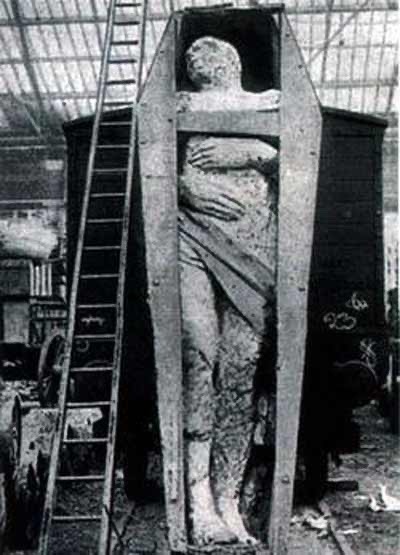
In 1895, a fossilized giant over 3.70 meters was discovered by a gold miner in County Antrim. He is exhibited and photographed in the London and North-Western Rallway Company’s Broad Street freight depot, then in Liverpool and Manchester.
What has become of this 3.70 m fossilized giant exhibited in a London depot in 1895? Analyzes could today provide us with invaluable answers.
Throughout all eras, under the Roman Empire, in the Middle Ages, in the 19th century and even today, all over the world, scientists, archaeologists, men of the Church, travelers, historians testify, seek, compile in very dense documentation the traces and the proofs of the existence on Earth of the giants, these men having sometimes measured up to more than 4 meters.
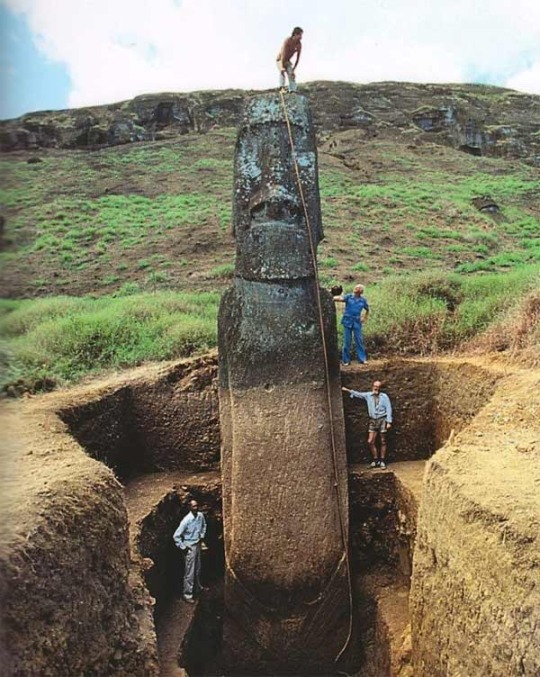
Goliath has always been considered a legendary figure, just like the giant Tom Thumb. Until neurologist Vladimir Berginer hypothesized that he really existed. Its disproportionate size (which Berginer estimates at three meters) is the result of a tumor in the pituitary gland, a condition called acromegaly-gigantism.
According to the Bible, Goliath was from a tribe in the Refaim Valley, in present-day Bashan. However, on the heights of the Golan, which overlooks their former territory, still stands today a 5,000 year old monument, the Gilgal Refaim.
Five concentric stone circles (the outer circle has a diameter of 159 meters), strangely resembling the site of Stonehenge, which we imagine to be the work of giants.
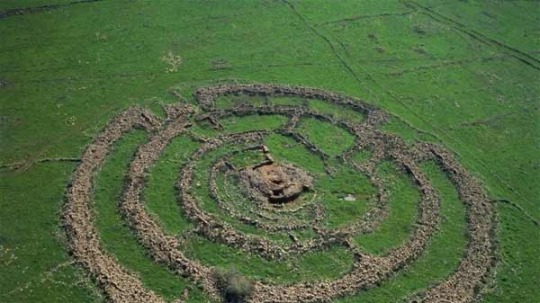
In addition, several elements from ancient sources seem to point to the existence of giants - if not myth - at the time: representations of giants on seals and in temples, mentions of giants in Syrian and Egyptian legends , etc.

Since the late 1980s, British researchers have been on the trail of evidence. At the Tell es-Sa’idiyeh burial site in Jordan, archaeologist Jonathan N. Tubb and his collaborators at the British Museum uncovered surprisingly large human bones. Proof of the existence of giants in Antiquity?
As these 2 representations attest, the Sumerian Gods were also giants.
We find the trace of giants in almost all cultures, and I am wondering if these statues and representations of giants that we can still admire today, would not ultimately be very real representations, a homage to true giants who would have populated the Earth in ancient times, all the old constructions are of gigantic sizes, and dedicated to the giants, which the less than 2000 years cannot know!
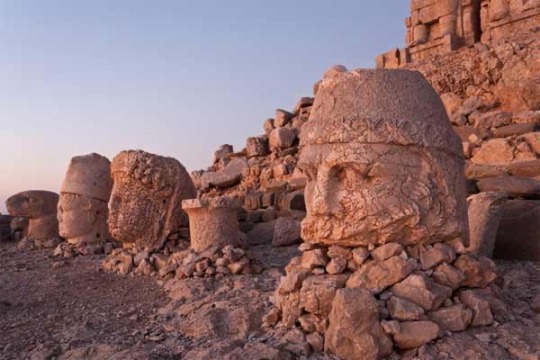
Examples: The Moai of Easter Island, the Colossi of Memnon, the statues of Abu Simbel, the great Buddha, giant statues of Bamiyan, in Afghanistan, The heads of Nemrut Dagi in Turkey, the giant Sumerian gods, the giants lying down from Agrigento, giant heads in San Lorenzo southern Mexico etc…
But let's continue ...
The Indians who live in the region of Tianhuanaco, in the Andes (20 km from Lake Titicaca) say that the colossal stones that built this megalithic city were transported by giants. They are described as very intelligent, fair-skinned men.
Excavations have found remains of bones, skulls and skeletons of men over 3 meters tall. The most prestigious and fascinating discovery is that of underground tunnels stretching for miles and leading to majestic halls as large as airplane hangars.
The Indians explain that these underground passages cross a large part of South America.
In the 15th century, the Spanish captain Francisco Pizzaro was the first to discover these underground galleries in the mountain of the Incas. Still in Peru, unexpected discoveries, such as in Ollantaytambo or Sacsayhuaman, raise the question of the civilization of disappeared giants having certainly had forgotten and particularly elaborate scientific knowledge.
Oddly, in some of these places we find representations of dinosaurs. The megalithic sites permanently refer to a civilization of giants. This is the case of Carnac, Stonehenge whose Celtic name Chior gaur means "the dance of the giants", or its equivalent in the north of Israel, in Gilgal Refaim.
Two years ago, in Bosnia, pyramids were discovered under forests and vegetation. Legends still speak in this specific case of giant builders.
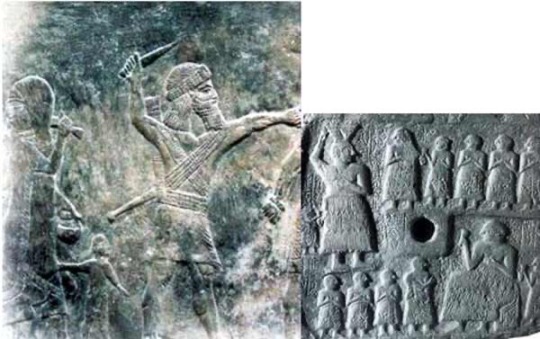
We also find in the world enigmatic pyramids which are the subject of the greatest scientific silence, as in central China, in the plains of Qin Chuan. One of them, nicknamed the "Great White Pyramid", is about 300 meters high, twice the size of the most imposing pyramids in Egypt.
One of these Egyptian pyramids, Cheops, according to manuscripts belonging to the Coptic tradition, was built by a race of giants.
The study of giants overturns our understanding of the world. Because it is possible that these giants existed at a time when everything was gigantic.
Indeed, we scientifically approach all forms of gigantism, in the flora, with the dinosaurs and including for the monkeys with the Gigantopithecus and the Meganthropus. Why then have we forgotten the giants of the human race?
We could logically assume that gigantic men could have lived in a time when everything was gigantic and know the dinosaurs. This is all the more disturbing that in his book Buried Alive, Dr. Jack Cuozzo goes in this direction. It shows the photograph in the Bernifal cave (France) of a fight between a mammoth and a dinosaur.
Likewise, Fran Barnes, a specialist in wall art writes that in San Rafael Swell (Utah), there are drawings from prehistoric times that resemble a winged reptile, a pterosaur.
The ancient people of Sumatra also produced many pieces of art with creatures with long tails, long necks and crests that appeared to correspond to Hadrosaurs. One of these pieces is on display at the Ethnographic Museum in Budapest.
Roman Empire mosaics dating back 200 years BC depict marine dinosaurs, Tanystropheus. In 1571, the conquistadors reported that strange creatures were found on Inca burial stones. Dr. Javier Cabrera has authenticated over a thousand.
In 1496, Bishop Richard Bell was buried at Carlisle Cathedral, in England. Dinosaurs are drawn on the copper parts that cover his tomb. Another very interesting case. In Queensland, several accounts of Aboriginal tribes describe creatures resembling plesiosaurs.
In the north of this Australian region, the Yarru (or Yarrba) speak of a similar creature living in the caves of an equatorial forest. This painting is very interesting because it shows Indians or men around a plesiosaur and represents the entire digestive, gastrointestinal tract of the animal.
Does this allow us to think that the Aboriginal hunters would have killed and butchered this dinosaur? Did these large animals really die 70 million years ago?
It is relevant to envisage a time when men and dinosaurs would have cohabited, but the study of the giants calls into question Darwinism and evolutionism, the foundations of contemporary science ... And this is also why the question of their existence is neglected, ignored, ridiculed by modern science and as if crushed under a lead screed!
However as we see, they existed, and all the ancient cultures and civilizations, pay homage to them, with gargantuan statues and constructions…
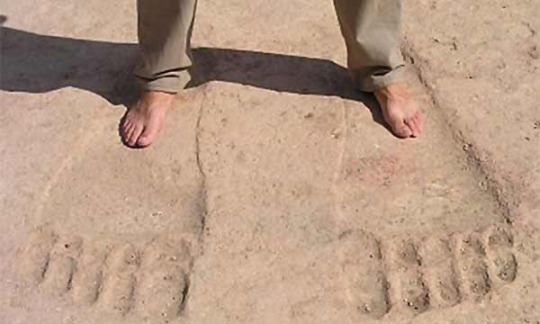
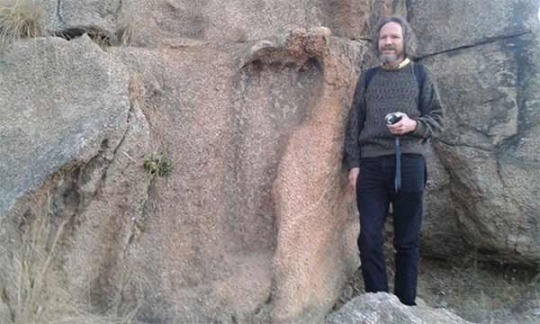
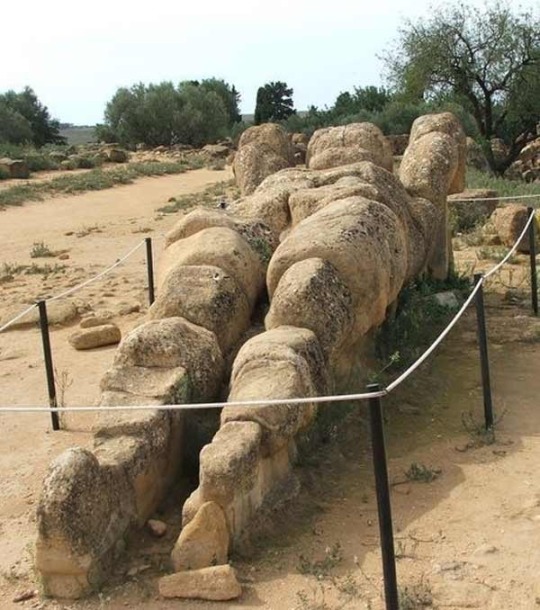
5 notes
·
View notes
Text
1 - Ruby Slippers

This week’s episode explores the unique story behind one of America’s most iconic and beloved objects: Dorothy’s Ruby Slippers.
LISTEN NOW
Resources Used (in order of reference)
Smithsonian History
“The Slippers” Documentary
Smithsonian Magazine
Henry Littlefield’s Piece on Allegory
American History Blog on Recovered Slippers
American History Blog on Conservation
Kickstarter Campaign
Learn More about the Ruby Slippers
Antique Roadshow Podcast
The Populist Movement in America
The Ruby Slippers of Oz
To access the transcript, click read more.
Greetings and welcome to Alternative Artifacts, a museum in your ear, the podcast that explores the strange stories behind the most unique objects in museum’s collections. Ever wonder how a gigantic Naked George Washington ended up in the National Museum of American History? Or why there is an entire museum dedicated to art made from human hair? Now you can listen to the stories of America’s most iconic objects from your favorite exhibit or from the comfort of your own home. My name is Lexi and I will be your tour guide.
[Transition Music]
Our first season will focus on objects in the collections of the Smithsonian Institution. Founded in 1846 with funds donated by British citizen James Smithson, the Smithsonian Institution is the largest museum complex and research centers in the world, and serves as an umbrella organization managing 19 museums and a zoo. Access to all Smithsonian Institution museums is completely free to the public. Beyond these publicly accessible venues, the Smithsonian also manages dozens of research centers throughout the United States and internationally, leading scientific research and disseminating knowledge. Some of the object’s stories we explore will expose the complicated, colonial history of the Institution, some will reveal how museum methods effect objects, and others will provide a glimpse into the lives of objects beyond the confines of the museum. Today’s object falls in the last category.
Picture this. You enter the American History museum from the bustling DC street Constitution Avenue, you will need to head upstairs to see our first artifact. This object is so famous it has its own special gift shop, instigated an investigation led by the FBI, and inspired a documentary. It is regarded as an object of cultural significance, despite being linked to no significant religious or political event. In the newest renovation of its exhibit, this object now sits on a pedestal in its own room, surrounded by walls decorated with murals that harken to the object’s origin. Poppy flowers, emerald green, a sweet little dog, a girl in a blue dress…I am talking about the Ruby Slippers. An American icon visited as often as the Star Spangled Banner and regarded by generations of movie lovers as a symbol of the American film industry. But how did these slippers become icons of American history? How did they end up property of the federal government? Why is the FBI involved in the science of their preservation? And what is the weird history behind them so few of their visitors actually know about? Today on Alternative Artifacts we investigate the Ruby Slippers.
[Transition Music]
In L. Frank Baum’s original book “The Wizard of Oz” the slippers that took Dorothy home were silver. Spoiler alert, if you can even spoil something that’s 119 years old. Some historical scholars argue the fact that the slippers were made of silver was meant to serve as a symbol from American politics. In the 1960s a scholar named Henry Littlefield claimed that Baum’s fairytale of a magical land called Oz was actually a satire. Littlefield argues that Baum’s experience on the prairie, which overlapped with the establishment of the Populist movement, or people’s party, in the region, was fodder for the allegory present in The Wizard of Oz. But this detailing this allegory could make an episode all its own, so for today’s episode we will only be focusing on the ruby colored slippers from the MGM film and how they came to be.
So how did the slippers we know and love today end up ruby instead of silver? During the early stages of production for the film “The Wizard of Oz,” MGM studios had a script that mentioned the shoes being silver. However, they decided to change the color to red during a round of script edits. There were several reasons for this change, but the most significant was actually quite simple and direct. If you recall the film, the scenes in Kansas are depicted in dull, black & white. The scenes in Oz are bright and colorful. Think of the yellow brick road and the emerald city. This was a very deliberate choice made by the film studio. While the Wizard of Oz, released on August 25, 1939, was not the first major motion picture to use Technicolor technology, the use of this tech was still very new and many audiences had little exposure to color footage. Making the slippers a vibrant color made them “pop” on screen, drawing viewers attention.
During the production of the film several pairs of the slippers were created, using commercially produced high heels which prop designers dyed red and added sequins to. There are four known surviving pairs of these original prop shoes. Today we will focus on two. First, the Smithsonian National Museum of American History is home to one pair, donated in 1979.
Another museum which possessed a pair of the shoes was the Judy Garland Museum. In 2005, their pair of Ruby Slippers went missing. They disappeared almost without a trace, with the thief leaving behind only a single red sequin. More on this later.
In 2016, the Smithsonian launched a kickstarter campaign to preserve their pair of the Ruby Slippers. Prior to this conservation, the slippers could only remain on display for short periods of time yet remained an iconic object, one visitors inquired about daily. This most recent conservation effort addressed many issues facing the aging footwear. It also included in-depth research into the properties of the materials the shoes were constructed from to better conserve them and similar objects in the future. Then, the team working to restore the slippers received an odd call from an unexpected party inquiring about their research.
[Transition Music - Suspenseful]
In a plot twist straight out of Hollywood, the Ruby Slipper conservators were about to become forensic scientists. The call was from the Federal Bureau of investigation, who had in their possession a pair of Ruby Slippers recovered in a sting operation. Suddenly, the conservation had become an investigation. The FBI asked the conservators to take a look at the slippers they had confiscated and compare them to the pair from the Smithsonian’s collection. The FBI wanted to know if it was possible for their pair of shoes to be an authentic pair of Ruby Slippers, and perhaps the ones stolen 11 years prior from the Judy Garland Museum. Dawn Wallace, the conservator leading the project, compared the moment she learned that she may be helping identify the pair of stolen slippers to the Indiana Jones films. After all, it is not often a museum professional gets the chance to fight crime.
Upon examining the FBI’s pair of slippers, Wallace knew that they were in fact an authentic pair of Dorothy’s iconic shoes. This pair of shoes was in fact so similar to the Smithsonian’s pair, it lead to another question. Why were they so similar? What Wallace noticed while trying to answer this question an even more astonishing discovery. When comparing the slippers side by side, it became clear that they were in fact mismatched pairs. The next question the team wanted to address was obvious: did the swap occur before or after filming? The evidence suggests the pairs were in fact swapped when they were made, and filmed as mismatched pairs, just as they are presented and preserved today. This conclusion is drawn from the fact that the construction patterns are similar between the matching shoes, but the wear patterns are similar between the mismatched shoes, suggesting Judy Garland wore and used them mismatched. In other words, the prop team working on the Wizard of Oz made the two pairs of shoes separately, but at some point swapped one shoe of each pair, leading to mismatched pairs being used on the set of the film.
The Ruby Slippers have developed a life beyond MGM’s production of “The Wizard of Oz” and outlived many other homages to the iconic film, including its depiction in Disney’s Great Movie Ride. They serve not only as an attraction for tourists, but as a monument to two major moments in American History: the introduction of technicolor technology to the American people and the immortalization of a wholly American fairytale. Today the Smithsonian’s pair of Ruby Slippers keep the magic alive. They can be viewed daily in their humidity and temperature controlled display case at the Smithsonian National Museum of American History at 1300 Constitution Ave NW, Washingtion DC.
[Transition Music]
Now here’s the museum tip of the week. Did you know the Smithsonian fossil hall recently reopened after being closed for 5 years? The newly renovated exhibit features 700 fossils and tells the story of 3.7 billion years of earth’s history. The only downside is that the Natural History Museum which houses the collection is also one of the most trafficked museums on the mall. The best time to go to avoid crowds according to a local? Wait until the weather cools down. By the end of October most of the Smithsonians will clear up, but the best time to go for an almost empty museum experience is always the month of January. Happy museum travels.
Want to learn more? Show notes including sources, further reading, links to cool stuff and podcast transcripts for each episode are available through our tumblr, alternativeartifactspodcast.tumblr.com. Alternative Artifacts is hosted through Anchor.fm, a free hosting service for podcasts of all kinds. You can subscribe to us on Anchor.fm directly or through Spotify Podcasts. Interested in sponsoring an episode? Have an awesome idea for an episode? Want to be a guest star? Email us at [email protected]. Theme music was created by NordGroove and downloaded via Fugue. The sound effects were provided by zapsplat.com. Remember, there is no place like home and never stop exploring.
[Outro Music]
2 notes
·
View notes
Text
Mint Fossil Natural Indian Sandstone

Mint Fossil Indian Sandstone comes in a variety of yellow, buff, and orange tones, with occasional natural fossil detailing, as well as deeper and purple tones that build gradually over hundreds of years and offer a striking touch to any garden or patio.
Transform your patio with the variety of natural colours and tones found in our Fossil Mint natural paving stones, which is appropriate to the British environment and will survive for years. Each slab is 22mm thick and has a riven surface characteristic, which is generated naturally when the stone is split along its layers for a genuinely authentic look. All riven slab has hand-dressed edges that add to the natural and organic aesthetic of riven sandstone paving, giving any conventional pattern an everlasting charm.
0 notes
Photo

Cenoceras Nautilus Fossil – Polished & Sectioned – Jurassic Inferior Oolite, Burton Bradstock Dorset UK – Authentic British Fossil with Certificate
This listing features a beautifully sectioned and polished Cenoceras Nautilus fossil, discovered on the world-renowned Jurassic Coast at Burton Bradstock, Dorset, UK. Dating to the Jurassic Period and preserved in the Inferior Oolite Formation, this specimen is a stunning example of ancient marine life that thrived over 170 million years ago.
Cenoceras is a genus of extinct nautiloids—an ancient group of cephalopods that includes modern nautiluses and are closely related to squid and octopuses. These marine creatures had coiled, chambered shells that allowed them to control buoyancy as they moved through the oceans. Unlike ammonites, Cenoceras featured smooth, rounded shells with less complex suture lines, giving them a more elegant appearance.
This specimen has been carefully sliced and polished, revealing the internal chamber structures of the shell. These chambers, once filled with gas or fluid, helped the animal maintain neutral buoyancy. The intricate patterns and natural mineralisation within the fossil create a striking visual appeal, making it a superb collector's item or unique decorative piece.
Your specimen was discovered by our own team members Alister and Alison on 17 January 2025 and has been meticulously cleaned, prepped, and treated by Alison for quality and preservation.
Item Details:
Name: Cenoceras Nautilus Fossil (Polished & Sectioned)
Genus: Cenoceras
Type: Nautiloid Cephalopod
Age: Jurassic Period
Geological Formation: Inferior Oolite
Location Found: Burton Bradstock, Dorset, UK
Scale Reference: Scale cube = 1cm (please see photo for full sizing)
Certificate of Authenticity: Included
ACTUAL AS SEEN: The image shows the exact specimen you will receive. Every fossil in our collection is hand-selected and professionally photographed for full transparency.
Please Note:
Some fossils may be gently propped for photography.
Colour may vary slightly due to lighting and device displays.
Measurements are approximate due to natural fossil shapes.
Once this item is sold, the listing will be updated with a new, carefully selected specimen.
100% Genuine Fossil – Professionally Selected – Certificate of Authenticity Included
#Cenoceras fossil#Nautilus fossil#Jurassic coast fossil#sectioned nautiloid#Inferior Oolite fossil#polished fossil#Burton Bradstock fossil#Dorset fossil#Jurassic nautilus UK#nautiloid ammonite fossil#authentic British fossil#Jurassic marine fossil#UK fossil collector specimen
0 notes
Link
The garden of archives | Art & Culture | thenews.com.pk Anyone not familiar with a man called Lieutenant TG Carless, would assume that the title of David Alesworth’s recent show, The Carless Mapping, is either a typo for careless mapping, or about cartography without using a motorcar. Instead, the exhibition (December 1-10, 2020, Canvas Gallery, Karachi) refers to Mr Carless “who painstakingly mapped Karachi harbour in 1837-38, as a commission for the East India Company”. However, without misreading the show’s title, one can still add other meanings into the works of Alesworth, a British-born artist, who painstakingly trained several generations of Pakistani artists, as the head of sculpture at the Indus Valley School of Art and Architecture, Karachi, from 1991 to 2002. “Alesworth is a sculptor, photographer and researcher of garden histories, working between Pakistan and the United Kingdom”. In the exhibition, you could see works revealing these three dimensions of his creative self. The display includes one large carpet and a number of archival prints; in which the artist demonstrated his interest in documentation. History coupled with geography provides the backbone to his art, especially in his recent works. Alesworth must have collected thousands of images of Karachi, and Pakistan while he was living here. But he is still here, even though he currently resides in Bristol. His work breathes in this environment and traces the presence and idea of outsider. The term ‘outsider’ can be interpreted ad infinitum. In a sense, everyone is a foreigner, because all of us track our origins far from the ground beneath our feet. This region was invaded, conquered, and colonised by various peoples. Between Aryans and British, the land was attacked by Arabs, Afghans, Central Asians, Portuguese and French, not always led by armies. Mercenaries, merchants, missionaries, artisans and other wanderers also sought better ventures and venues here. A newcomer needs to know the area, so a map becomes a priority �� whether in mind or on the surface of stone, clay, parchment, paper, screen. A map, in its essence, is an abstraction. It is not an objective rendering of factual information, but a subjective transcription. Hence the history of maps; which is as packed with contradictions, corrections, and distortions, as the corpus of history itself. David Alesworth blends layers of history in his works; particularly in The Carless Kashan, 1838, using a carpet from Kashan that “was considered one of the most important trading places on the famous Silk Road”. Alesworth restored the old carpet, and superimposed on it a map of ‘Kurrachee’ as drawn by Lt Carless, which, the artist informs us, “was no innocent mapping of the terrain for the greater good but rather a precursor to military action”. In Alesworth’s piece, you see the idealised plan of heaven portrayed in the language of geometry and weaved in wool on the rug from Kashan, conversing with a colonial’s cartography of an alien settlement. The work, signifies a meeting point of different perceptions of tangible/desirable world. In fact, it is not only in making a map that we are engaged in preserving our observations, information and knowledge of our surroundings. Often we indulge in erasure too (since the two acts correspond). You write on the slate of history by wiping what was inscribed before. However, some texts survive as ghost images, and haunt us. Alesworth denotes merger of diverse pasts; but more on how systematic recording of geography served Imperial designs. English officers, educationists, and orientalists gathered material on India (safely stored in libraries and archives both in the UK and the subcontinent). Initiated for political and military gains, this data is now accessed for other, multiple gains. David Alesworth’s exhibition is a long and continuous note on memory and amnesia. Along with the carpet, he is showing a set of three archival textile prints on satin cotton cloth, in which rose plants (from 18th Century French botanical engravings) and their description underneath, are embroidered in black cotton, thus elimination by blocking the detail of original image. The exhibition also includes a series of prints, titled Gardening the Archive, with pictures of plants composed against pages of notebooks from archives (India Office Library for instance). In another work, species of flora are superimposed on plans of Kensington Garden, London. These works combine pictures, and botanical terms of vegetation, harking back to the primordial habit of humans ‘naming’ (started in the Garden of Eden), and controlling everything else. “And Adam gave names to all cattle, and the fowl of the air, and to every beast of the field” (Gen. 2:20), thus acquired supremacy and authority over them. Probably, the invention of writing was the first attempt in archiving. Soon, describing, inscribing and archiving became a tool of power. Human beings kept on calling what they saw, hence tamed; the way English colonials defined and subjugated what they encountered in India. According to the artist: “The Gardening the Archive series continues to weave together archival documents from Western horticultural history, many of these referencing locations that are now within Pakistan”. Plants represent the soul of a soil. Humans can migrate, disown, denounce the land of their origin, but plants cannot do this. They are rooted deep within a place. Some species existed before the great phases of history, say, Kushan Empire or Mughal Dynasty. David Alesworth as part of 2nd Pioneer Canvas Residency, 2018 at Khushab, investigated vernacular vegetation, and drew from the fossil record that “represent some of the species of plants that laid down these fossil fuel reserves up to 350 million years ago”. He used “tractor mounted blade and D85 Bulldozer… to prepare each drawing surface” which consisted of bituminous coal and limestone dust, and were approximately three hundred feet long. These immense drawings on ground, made for a brief period of time, were photographed from a ninety-foot crane; and installed as archival print in the exhibition. An intriguing aspect of these ‘drawings’ is their scale, because once made, these were not seen from a single viewing position, hence the best representation is not one’s own experience but through documentation. A drastic shift in scale changes the nature of these works; at Canvas Gallery, they give the illusion of drawings made in charcoal on a rough sheet. This, and other works from Alesworth’s show map not a physical terrain, but a mental landscape in which notions such as originality, authenticity, natural, implanted, exploited, exist side by side. David Alesworth, besides being a celebrated visual artist and respected art teacher is also known for his involvement in gardening, of a professional scale/standard. A key to recurring references of plants in his artworks; but in reality, every artist is a gardener: watering, nurturing, clipping, pruning, protecting, planting, caring, cultivating and growing ideas/images that form the private archives of a creative individual. To Alesworth: ‘The Archive’ is also a garden, one closely tended to, and the garden is always an Archive, though also in flux”. The writer is an art critic based in Lahore. https://timespakistan.com/the-garden-of-archives-art-culture-thenews-com-pk/5689/
0 notes
Text
HOW TO LIVE AN AUTHENTIC LIFE, ON PURPOSE

We live in a fast-paced, ever developing, and ever-changing world. Full of Tweets, Likes, and shares. In an instant someone’s life can change. Sometimes for the better, sometimes for the worse. All by hitting send. We decide based on them. What we wear. What we buy. Where we go. How we act and yes, how we show up in life. We decide if we like someone, something, or someplace based on popularity. It is part of our culture now and has become the new social norm, so we all accept it. But are we being authentic? Are we being true to ourselves, or just being marketed and tricked into thinking this is how we should be, act, or show up? You are one decision away from an original life. Only you can decide which way it will turn out. Merriam-Webster defines Authentic as: not false or Imitation: REAL, ACTUAL, and true to one’s personality, spirit, or character. Moving your life in the direction that is not false or Imitation: REAL, ACTUAL, and true to one’s personality, spirit, or character aligns you with the things in life you want and desire and will prevent you from living in fear of thinking “what will happen if I say no?”. Using any method to attain something will NOT work if you do not know what you want as the outcome. The mistake we all make is we focus on the person, place, or thing we think will save us and we focus on something way too big. This creates an enormous gap between where you are verses where you want to be that you think will rescue you from your miserable life right now. That gap can be the thing that can make you feel lost in figuring out what you want, and discovering what your passion or direction is, or should be. Those in life who are genuinely happy in life understand the power of, and vehemently stick to, being their authentic selves. EXAMPLES OF A NON-AUTHENTIC LIFE EXAMPLE 1 Your friends' lives may look more exciting than yours on Facebook, but recent research reveals that is because they might be faking it. A recent survey has found around two-thirds of people on social media post images to their profiles to make their lives seem more adventurous. And over three quarters of those asked said they judged their peers based on what they saw on their Instagram, Snapchat, or Facebook profiles. A published British survey, by smartphone maker HTC, found that, to make our own pages and lives appear more exciting, six percent also said they had borrowed items to include in the images to pass them off as their own. More than half of those surveyed said they posted images of items and places purely to cause jealousy among friends and family. 76 percent of those asked also said seeing items on social media influences them to buy them, with men more likely to take style advice and buy what they see. EXAMPLE 2 Over 5,000 people have taken the free online test “Does Your Job Require High or Low Emotional Intelligence?” And after analyzing the data, they made a scary discovery. It was discovered that 51% of people said that they Always or Frequently have to ‘act’ or ‘put on a show’ at work. But they made an even bigger discovery; 51% who must ‘put on a show at work’ are 32% less likely to love their job. Or put another way, if you do not have to fake your emotions at work, you are 32% more likely to love your job. And not only will you be more likely to love your job, you are also much less likely to have negative feelings about your job. People that do not have to put on a show are 59% less likely to dislike or hate their job. This data also suggests that many people would probably enjoy taking a deep look at their own emotional intelligence, particularly to discover whether they must do lots of acting on the job. The more they are forced to act like they have the right attitude, the less happy they will ultimately be. EXAMPLE 3 Another related construct is the Self-Fulfilling Prophecy. Sociologist Robert K. Merton coined the term to describe a phenomenon that dates to Ancient Greece. Basically, a prediction about the outcome of a situation can invoke a new behavior that leads to the prediction coming true. For example, if I believed that I would fail an exam, that belief may have led me to alter the strategies I used for preparation and taking the test, and I would probably fail it. While I may have had an excellent chance to pass, my belief hindered my performance, and I made this belief become a reality. Psychological research shows that the self-fulfilling prophecy works for both negative and positive predictions, showing again that the beliefs you hold impact what happens to you. EXAMPLE 4 In a yearlong study it was found that those ringing the alarm bells the loudest about climate change are the least likely to change their own behavior. They just want everyone else to. The study divided 600 adults who reported on their climate-change beliefs into three groups: "skeptical," "cautiously worried" and "highly concerned." Then the researchers — from the University of Michigan and Cornell University — tracked how often they reported doing things like recycling, using public transportation, buying environmentally friendly consumer products, and reusing shopping bags. And they asked about support for government mandates like CO2 emission reduction, gasoline taxes and renewable energy subsidies. The Journal of Environmental Psychology published the findings. What they found was very illuminating. The researchers found that the "highly concerned" group was the least likely to take individual action, but they were the most insistent on government action. The "skeptical" group, in contrast, was the most likely to recycle, use public transportation and do other environmentally sound things all on their own. Skeptics were least likely to endorse costly government regulations and mandates. "Belief in climate change," the researchers explained, "predicted support for government policies, but rarely translated to individual-level, self-reported pro-environmental behavior." In plain English: The position of climate-change genuine believers is: Do as I say, not as I do. This study supports a YouGov poll reported on recently, which found that most of those who believe in catastrophic global warming are not doing anything on their own to combat it. More than half said they are not cutting back on their use of fossil fuels or changing their recycling or composting habits. Another study found that "conservation scientists," have carbon footprints that do not differ from those of anyone else. The study found that these scientists "still flew frequently — an average of nine flights a year — ate meat or fish approximately five times a week and rarely purchased carbon offsets for their own emissions." EXAMPLE 5 A study by Deloitte found that 61% of millennial's who rarely or never volunteer still consider a company’s commitment to the community when deciding on a potential job even though 60% of hiring managers see the act of volunteerism as a valuable asset when making recruitment decisions according to a study performed by Career Builder. 92% of human resource executives agree that volunteering can improve an employee’s leadership skills. Only 4% of college graduates, 25 years or older, volunteer each year. Millennial's ages 18 to 30 are more likely to have gone to a protest since the election than any other age group, according to a HuffPost/YouGov poll conducted from Feb. 1 to Feb. 3. Millennial's are also more likely than older groups to think protesting is an effective form of political action. In recent days America has seem mass protests and unrest which has in every corner of the country left charred and shattered landscapes in dozens of American cities over the death of George Floyd. They estimate that the damages left behind will total in the billions. Cities who encountered the most loss and damages include: Minneapolis, Minn. Los Angeles California New York, NY Philadelphia, PA Nashville Tenn. San Francisco, CA. Detroit, Mich. Portland, Ore. Chicago, Ill. Atlanta, Ga. Washington, D.C. In a national survey reported by the National Service Knowledge Network of Volunteer Rates by State they ranked the followings states in this order. Minneapolis, Minn. Minnesota #1 with a 43.23% volunteer rate statewide. Portland, Ore. Oregon #13 with a 31.42% volunteer rate statewide. Washington, D.C. District of Columbia #14 with a 31.07% volunteer rate statewide. Philadelphia, PA Pennsylvania #22 with a 28.03% volunteer rate statewide. Detroit, Mich. Michigan #26 with a 26.64% volunteer rate statewide. Chicago, Ill. Illinois #31 with a 24.85% volunteer rate statewide. Nashville Tenn. Tennessee #33 with a 24.12% volunteer rate statewide. Los Angeles CA California #34 with a 23.89% volunteer rate statewide. Atlanta, Ga. Georgia #39 with a 23.00% volunteer rate statewide. New York, NY New York #49 with a 19.61% volunteer rate statewide. This survey points out that except for Minnesota, the cities who had the most people who marched to support the problem, volunteered, and supported in the community the least.They estimate that over one million people will attend a George Floyd protest, yet most have never volunteered in the neighborhoods who need the help the most. Some officials estimate that most still will not. How to Live an Authentic Life, On Purpose Most of us struggle with the need to be seen, heard, respected, and yes, Loved. We all want to stay true to ourselves, but we also want to fit in. Therein lies the dilemma. How do we stay true to ourselves, yet still stay in our Tribe? We were born and created Tribal, a community, a family, and not meant to do this alone. Our Tribe is who we associate with, trust, and allow to influence us. They are that powerful group who are our biggest support system and cheerleaders. They become a family and we can sometimes know them all our lives. They make you feel relevant, seen, heard, important, and valued. But are they the right tribe for you? Are they really your family, or just your influence? Living an Authentic Life will prevent you from joining the wrong tribe and surround yourself with only those who will make you better by being honest with you. Calling you out when you mess up. Praising you on the victories, and yes, walking next to you in the dark valley’s that life will always throw at you. When you do not know WHO you are, someone else will decide it for you and it might or might not be the person you want to be. So how do we do it? How do we keep the passion, yet still be authentic? How do we be REAL, NOT FAKE? Here are some suggestions. - Start with the person in the mirror first. Too many times people seek approval first, and acceptance second. Stop it! Look in the mirror at the person you see and accept them, warts, and all. You are not perfect and need not be, but you are perfect for you. Accept that! - Own your life, do not borrow one. Successful and Happy people need not prove anything to anyone, and they do not need other’s approval. The beautiful thing about life is if you dislike yours, you can always change it. When the haters hate, and they will, let them. And forget them. When you make a mistake, and you will own it 100%, then move on. It's in our mistakes we learn what will and will not work. - Be honest, do not live a lie. Do not pretend to be something or someone you are not, for someone else’s sake. If people do not accept you, as you are, where you are, for WHO you are they should not be in your life, let alone influence you. - Be ALL IN. A living example, more than words, will create action. If you believe in a movement, LIVE the movement 100%. If you believe in a cause, LIVE the cause 100%. Show me how you want me to see you and I will see you. Tell me and it will get lost in the noise. Give 100% every day to everything, especially yourself. Just be All In! - Forgive easily, and often. Successful and Happy people do not hold a grudge, they cannot. It impedes progress. It holds them back. It makes you bitter. Give others the same break you give yourself and forgive yourself, often. Others, and you, will be glad you did. - Put your own oxygen mask on first. We have all heard the warnings on airplanes, “if they deploy the oxygen masks, puts yours on first, then those who are with you next”. Make a habit of taking care of yourself, first. Self-care is the most important care you will ever receive. Make it a regular occurrence and do it often. - Live your life in Service to Humanity. Countless studies have shown that those who put other's needs above their own live longer, happier, more fulfilling lives. Care. Genuinely care. About others, about issues, about people. Then serve them. Do not save them, rescue them, or bail them out. Serve them by allowing your help to be about them, and not you. Do it with no expectations. If you need to be thanked, you did it for the wrong person. - If you have a choice between being right verses being kind, be kind. Successful and happy people can “give others a break”. They do not always need to be right. It is not a reflection on them. Sometimes it is better to lose the battle and win the war. - Pay everything forward. We deserve nothing in life. Life is not fair; it is designed that way. When you receive anything, it is a gift, be thankful, and share it. If you clutch on to life with a clenched fist so nothing can escape, nothing can enter either. Be generous, and life will be generous back. Volunteer, donate, serve, contribute, take part, mentor, and ask nothing in return. Remember, if you need to be thanked, it is a bribe, not a gift. - Life rewards the brave, so be brave. Take a chance, be vulnerable, be approachable, be teachable, take the first step, start the conversation, listen intending to listen and without thinking of what you will say next. Step outside of your comfort zone. That is where you will grow the most. A plant, transplanted from a pot to the ground will grow bigger and stronger, naturally. - Be more understanding. We are a divided world today. Friends lose friends over politics. People are against someone, someplace, or something without ever attempting to understand things from the other people's point of view. Take the time to ask why they believe what they believe, then shut up, do not interrupt, or interject, and just listen. Ask questions, with the desire to learn something and let them believe it even if you do not. People do not care what you know until they know you care. - Be more accepting of others Allow others to coexist around you as they are, not how you think they should be. Successful and Happy people are not threatened by what they do not understand. They attempt to understand it and accept that whatever it might be is the right choice for the other person even though it might not be the right choice for them and is no reflection on them. Accepting others as they are, where they are, for who they are, just as they are is one of the greatest ways to understand others and have a meaningful conversation with them. Do so intending to understand them, not to prove them wrong. If you have enjoyed this article please visit me at www.JosephBinning.com for more helpful tips and articles. You can also get more helpful information in my book You Matter, even if you don’t think so which you can purchase on Amazon here Amazon You Matter, even if you don't think so For my free report Happiness Is A Choice click here: Happiness Is A Choice Free Report Remember: Happiness is a choice, so choose to be happy. Read the full article
1 note
·
View note
Text
SUMMARY Dr. Jennifer Pailey brings her sister Lisa to the resort town of Snowfield, Colorado, a small ski resort village nestled in the Rocky Mountains where Jenny works as a doctor. Once in town, the sisters find no one around but a few corpses. At first their suspicions are that of a serial killer on the loose in town. The sisters stumble upon the severed heads of the town baker and his wife in an oven when they are found by Sheriff Bryce Hammond, a former FBI agent, and his deputies Stu Wargle and Steve Shanning. Hammond and his deputies are investigating the killings.
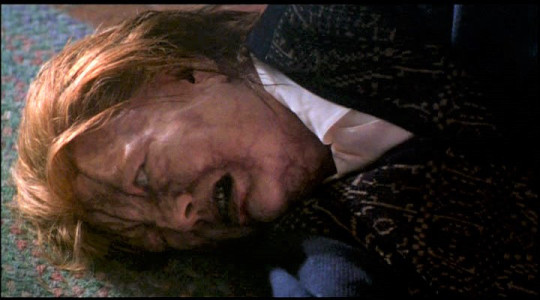
The group arrives at a nearby hotel and find the writing of a victim on the mirror reading “Timothy Flyte”. Shanning leaves to investigate a sound outside but doesn’t return. The others find only his gun, hat and shoes while the rest of him is gone. They return to the sheriff’s office to request aid and create roadblocks around Snowfield. The group gets a strange phone call but are interrupted by an attack by a bizarre moth-like creature that rips Wargle’s face off before Hammond is able to kill it. Lisa later encounters Wargle while in the bathroom. They quickly return to the morgue and find his body missing.
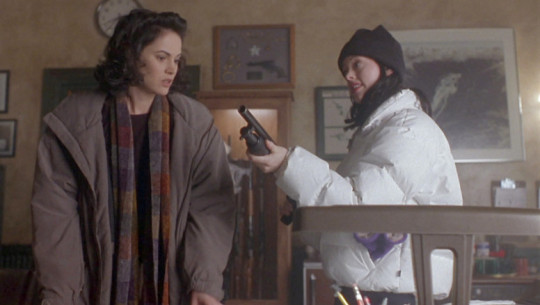
Hammond’s FBI associates find Flyte, a British academic who theorizes the town has fallen victim to the Ancient Enemy, an entity he generalizes as “chaos in the flesh”. It periodically wipes out civilizations including that of the Mayans and the Roanoke Island colonists.
They are soon joined by an Army commando unit and a group of scientists led by General Copperfield who has come to Snowfield. They, along with Flyte, investigate the town. The creature kills soldiers investigating the sewers, while a dog approaches Flyte and the scientists and transforms into a gruesome monster that converts the group, except for Flyte. Flyte regroups with Hammond, Jenny, Lisa, and Copperfield. The creature attacks Copperfield through a manhole, converting him. Copperfield vomits a sample before melting into a puddle of black liquid. Through it, Flyte and the group learn the nature of the Ancient Enemy.

Revealed to actually be an Earth-based amoebic life form that mimics its absorbed victims while gaining their knowledge, the Enemy creates Phantoms as temporary detachments for it to act through before absorbing them back into it. Furthermore, the Enemy absorbs all of the thoughts of its victims, making it extremely intelligent, and because of the previous civilizations’ perception of it, it believes itself to be a god. It had arranged all of the prior events so Flyte can assist the creature in revealing its existence to the world. Flyte also learns that the creature’s body is physiologically almost identical to crude oil, and could be killed by bacteria bio-engineered to ingest fossil fuels. They deduce that with the limited amount of the bacteria they have, they need to get the bacteria into the nucleus that is within the main body of the Enemy.
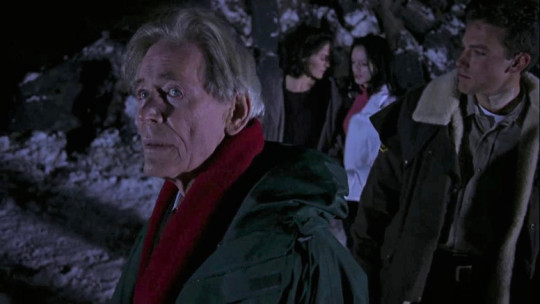
They form a plan to use the Ancient Enemy’s extreme arrogance and god complex against itself. To do so, Flyte acts as if he is turning against the group by revealing their entire plan to the Enemy. In anger (and believing itself indestructible due to being a god), it reabsorbs all the Phantoms and then emerges from the sewers to assume a Mother Mass form. Hammond and the Pailey sisters fire the bacteria into the Ancient Enemy before it retreats underground with Hammond in pursuit.
While the Pailey sisters find themselves dealing with Wargle’s Phantom, Jenny seemingly kills it with a gun containing the bacteria. Hammond finds the Ancient Enemy as it has assumed the form of the boy he accidentally killed during an FBI drug raid. When the boy grabs the last vial from him, Hammond shoots at it to expose the creature to its contents. It dies from the bacteria.
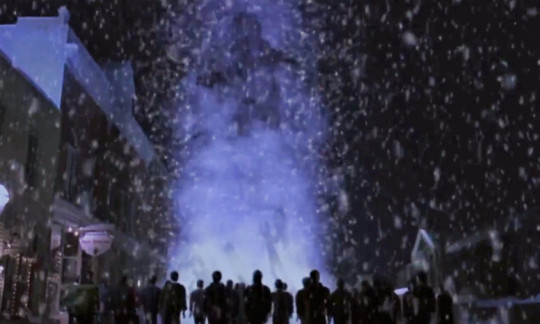
Though Hammond reassures Lisa and Jenny that it is gone, with the former stating the townsfolk are at peace, Flyte admits the Ancient Enemy did achieve its victory as he has decided to tell the world what happened with a book based on what occurred in Snowfield. Sometime later, watching Flyte being interviewed about his book, The Ancient Enemy, two bar patrons argue about the existence of alien life. Hearing laughter nearby, the patrons turn to see Wargle as he asks them if they want to see something interesting.
youtube
DEVELOPMENT/PRODUCTION The majority of PHANTOMS’ principal photography was shot in Colorado. Georgetown, with a population of just 900, stood in for Snowfield, and interiors were filmed in a huge warehouse in south Denver, formerly host of PERRY MASON and FATHER DOWLING MYSTERIES.
Co-producer Michael Leahy, who was made an Honorary Mayor of Georgetown, found the tiny mountain hamlet to be an ideal location for shooting the exterior Snowfield scenes. “We had all the production services that we need in Denver, just 35 minutes away. We had 75% to 80% local crews, which was important to us to try to do, not only as a cost-effective issue but also to try to spend some money here.”
“If you read the book,” Chappelle said, “then drive through Georgetown, you have to think that Dean Koontz was here—he saw this and wrote it.” But shooting a film at 8500 feet in October and November was a grueling endurance test. “It’s a night movie for the most part,” Chappelle said, “and we had three weeks in a row of hard nights. Shooting in twenty degree weather night after night, you’re out for twelve hours in the cold. It kind of beats you up a bit.” But Chappelle felt the production would be great enhanced by the look of the location, with the mountains looming over this Victorian town. One night we had real snow falling, and we were able to incorporate it. You can’t pay for that.”
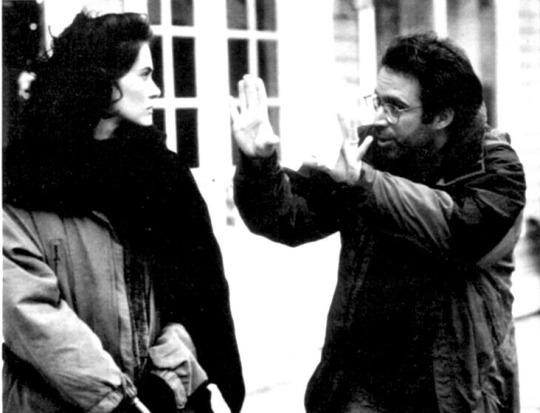
Interiors filmed in Denver included an authentic mountain town sheriff’s office, sewer tunnels where the Ancient Enemy lurks, and the interior of a government Chemical Biological Warfare Vehicle, or CBW, headquarters of an elite team brought in to investigate the Snowfield disappearances when the town is blockaded by the military. It was in Denver that O’Toole finished his scenes and returned to England in early December, while the rest of the cast and crew headed back to Hollywood for more effects shooting.
youtube
As for Executive Producer Koontz, he declined to visit the Colorado locations to watch the filming of his tale. “I heard he doesn’t like to fly,” Chappelle said. “But he’s seen some of the dailies, some of the cut footage, and as I understand it he’s very happy with what we’re doing so far. I know he’s had some bad experiences in the past. He’s not been happy with those, so hopefully this will be different.”
It was Koontz’ clever idea of joining actual historical mysteries to a fictional solution that grabbed Soisson a decade ago, and his enthusiasm for the project endured through the years of trying to get the project off the ground, right up to the final days of location shooting. “To me, this is the most fascinating critter I’ve ever been around,” he said of Koontz’ Ancient Enemy. “And that’s why, after pushing this uphill as long as we have, I’m still totally jazzed about PHANTOMS.”
Chappelle is enthusiastic about his cast, whom he believes brought a great deal to their roles and have elevated Phantoms above B-movie status-especially the always welcome O’Toole. “There is a section in this film where Flyte is describing all these actual historical mass disappearances, and it could have been read like a phone book,” the director says. “When Peter O’Toole is giving you this backstory, though, it’s fascinating. It’s like Edgar Allan Poe reading Shakespeare. Hearing him say those lines, you really want to know about the disappearance at Roanoke or what happened in China in 1939, when a whole army vanished overnight.” Another surprise for Chappelle was the absence of attitude from the cast-something he was convinced would happen once he moved up to bigger-budgeted films like this. “They were all into it,” the director says. “The interesting part was to watch the different styles of acting. You have Peter O’Toole coming out of that British Shakespearean background. His training is to come in prepared and know exactly what he’s doing. However, some of the younger actors have been taught that it’s a process of discovery. Ben Affleck is like that, and he and Peter had a couple of scenes together. So here you had O’Toole, who does two or three takes, nails it and wants to move on, while Ben wanted more time to explore the scene. But Peter was great and such a pro. He would do the takes with Ben and work it out. I loved the energy of all that.”
O’Toole plays Timothy Flyte, a rumpled Englishman bounced from Oxford because of his seemingly outlandish theories explaining mass disappearances throughout history. He’s slumming as a tabloid journalist when the startling news comes that his theory of man’s Ancient Enemy may hold more water than his detractors had thought.
Among the last scenes O’Toole was to complete before returning to England were those filmed on the Chemical Biological Warfare Vehicle set. It’s in the CBW that Flyte first communicates with the Ancient Enemy via computer. The creature ends the conversation by rocking the large van and everyone in it. O’Toole endured being shaken up for a whole afternoon.
The set was entirely enclosed, the action inside viewable only on the sound man’s monitor. More so than any of the other cast members, O’Toole’s famous voice burst forcefully through the walls of the CBW set to the listeners outside.
youtube
With every take of the scene where Flyte speculates on how the Ancient Enemy can interact and communicate through the computer, O’Toole gave meticulously identical line readings. There was no variation in the way he played it. Obviously, he’d long ago studied and decided how Flyte would utter his pronouncements. His delivery seemed consummately right-exactly the way you’d imagine Peter O’Toole would say his lines; indeed, should say them: with the careful, song-like inflection that has mesmerized audiences for decades.
After filming wrapped for the day, an obviously weary O’Toole graciously provided a few minutes to talk about PHANTOMS. “Forgive me if I’m not coherent,” he warned, “but it’s been a very long day. I’ve been muttering lots and lots of things about flatworms and biological substances and chemical warfare and on and on!” He made a face, as though tongue-tied. “And I’ve been shaken quite a lot today, too!”
Asked how he viewed his character, he responded, “That’s a matter which I could no more discuss than I could fly in the air. I understand it’s quite fashionable now to do this. But for me to do it would be to spit into vapor.”
O’Toole said he was amused by his character’s predicament. “He’s made wild claims no one buys into, and so he’s reduced-poor fellow-to working for the tabloids. Just to earn a shilling!” Flyte has ruined his academic career for a theory that’s unproven-until now. “He believes he has this knowledge,” O’Toole said. “The Ancient Enemy has never manifested itself before. And it’s the manifestation that really makes the film. This creature is responsible for these mass disappearances. It’s a fascinating historical phenomenon, and was completely new to me before I read the script.” The Colorado weather, which brought an additional level of creepiness to some of the outdoor scenes. As Soisson jokes, “Everyone was miserable, but it made the film look beautiful.” “We were fighting the snow continuity throughout the shoot,” adds Chappelle. “If it snowed earlier, we were screwed and had to fake it for the rest of the movie. So we dodged the snow bullet the whole time. There was this sequence where O’Toole had to deliver this challenge to the ‘ancient enemy.’ At that time, an incredible light snow fell through the whole sequence, and it was beautiful and eerie. This was his big monologue, and he was backlit with real snow falling. It was one of those things you could not plan. It sort of made the other three weeks of hell worth it. And in the dailies, it cut together rather well. It was one of those rare occasions where nature and the filmmaking process came together.”
Novelist Dean Koontz knows the adaptation drill all too well. You get a call from Hollywood, they want to buy the rights to your book, they give you loads of cash, you walk away and then something like Watchers gets made that doesn’t resemble a single word you’ve written.
youtube
“You always know when they buy the film rights that they’re going to change things radically, partly because few books can translate to film exactly as they’re written,” says Koontz. “Generally, if it can, it means that the book was too simplistic, because film is a much easier medium to fill two hours with.” ! This, of course, hasn’t stopped people from trying to adapt Koontz (whose books, ironically, have concepts that are more cinematic and translatable than even his direct competitor Stephen King). The result has been a mixed bag at best. “I have a theory,” says producer Joel (The Prophecy) Soisson regarding the failure of Koontz-based movies like Hideaway to live up to the promise of their premises. “I believe we all like to think we’re more clever than the novelist. So we change it and think we can make it a better movie than it was a book. And nothing I’ve ever seen as a movie has come close to what this guy has done in his novels. So it’s incredibly arrogant for me or anyone else to think we can actually make it better.”
Still, Koontz and his legion of faithful followers have had to witness some of his best work get butchered, while the author had very little say in the process. “You get used to the fact that when you make films, it’s not going to be the book,” the author sighs. “But you at least hope it’s going to be the spirit of the book.”
Which bring us to Phantoms, the cream of Koontz’s literary oeuvre. Anyone who has ever become a fan of the author usually cites it as the book that first got them hooked. It has also been the one Koontz novel that has floated around Hollywood circles for nearly 10 years, always seeming two seconds away from being committed to celluloid.
Now the wait is over and Phantoms will soon be hitting theaters, with Koontz on board as screenwriter and bearing a contract allowing him final approval of any changes the filmmakers wanted to make during principal photography. “That made it harder at first to get clearances if we wanted to change things,” admits director Joe Chappelle. “Then, when he saw the dailies and realized we weren’t going to destroy his script, he gave us carte blanche. He said, ‘If Joe and the actors want to work out something on set and revise it, it’s OK.’ So he gave us a lot of latitude. Still, I was very cognizant of not wanting Dean to think I was the second coming of Brett Leonard (the director of Hideaway). I know he hates Hideaway, and he went on record saying these horrible things about Brett. So I knew Dean had this very healthy fear of filmmakers coming in and twisting his material for their own demands. We made it clear to him from the beginning that we wanted to make his movie. We weren’t going to twist it and make it something different. We wanted to make Phantoms the movie a faithful adaptation of the book.
That was a top priority for producer Soisson as well, especially since he was aware of the novel’s loyal fan base and wasn’t about to have it gutted once the movie was greenlit. In fact, when the movie finally got its financing, an early-’90s draft of Phantoms by Soisson and a more recent script by Koontz were essentially intertwined into the final shooting script.
youtube
“If you’re adapting The English Patient, you’re going to have some cinematic license because there’s a lot that’s interior about that book,” Soisson notes. “There’s hardly anything interior about Phantoms, except some of the things I would love to capture about the whole philosophical nature of the creature that we can’t touch upon. So what you really have to do when you turn a book into a movie is be an editor. You have to know that you have two hours to tell a story that takes you 40 hours to read. Dean has been excluded from many of the films he’s been involved with, but Miramax let Dean and I make Dean’s novel. Who else has done that?” While no one has at this point, many people will still no doubt cast a very critical eye on the final product. What’s more, since the publication of Phantoms in 1983, other filmmakers have already liberally cannibalized moments from the novel for their own cinematic visions. According to Chappelle, this posed something of a challenge. “We really wanted the stuff to be fresh and not do the kind of things that have been overdone in movies over the last 10 years,” he says. “The book was written in 1983, and a lot of it has been done consciously and unconsciously in other films. The remake of The Blob, for instance, has sequences that are directly out of the book. But horror films and books all fold upon themselves and reference each other anyway. The best we could do was take this 1983 book and make a 1997 kind of movie out of it.”
Naturally, a few minor changes occurred from book to screen. These include condensing the book’s three day time span down to one night, reducing the number of characters and resolving the story in a more cinematically cost-effective way. “The book is huge, and the question is, how do you pare it down into something you can do into a movie?” Chappelle says. “The ending is a little different in the way they trick the creature, because in the book it was just too easy to destroy the monster.”
Of course, one of the book and film’s best qualities is the way the creature is not only a threatening adversary (it shapeshifts, becomes its victims, etc.), but has something extra to make it even more omnipotent: a philosophy. “This is the most incredible, unique and fearsome entity ever, because it is not only the root of all evil, but also the symbol of what humankind later forged as the notion of Satan,” Soisson explains. “This creature predates man and the dinosaurs, and has come to think that it is what humans call it, and has absorbed the concept of being Satan.”
Much like the John W. Campbell short story “Who Goes There?” (the inspiration for both versions of The Thing), Phantoms presents its monster as a shapeshifter and a body-snatcher, but Chappelle cautions that it’s more “What is it?” than “Who is it?” “Those who have read the book know that whatever the creature eats, it can become,” the director says. “There is this notion that it has trapped the souls of people it has eaten, which is kind of a scary thought, going back to the devil literally holding souls in his hand. And there is a visual equivalent to that when the creature manifests itself at the end of the movie. There’s even a sequence where it tries to communicate with Flyte, telling him to study it and revere it and write its gospel. Basically, it says, ‘I want to show the wonder of myself.’ This is a creature with a God complex and a huge ego.”
youtube
Although principal photography began late last year in Colorado for a 36-day shoot, production had to shut down for the holidays, and due to actor availability had to resume nearly a month later for 15 days of pickups and special makeup FX shots. “One thing I learned on these bigger-budgeted movies is that an actor’s time and availability are more precious than anything else, and sometimes you have to work around their schedule,” Chappelle admits.
The fairly complicated sequence being prepped today requires the stuntman (standing in for actor Liev Schreiber, with the creature attached to his face) to fly through the window of the sheriff’s office set on cables as pyrotechnics erupt around him. On the first take, it’s like the Fourth of July as the stuntman flails around with KNB EFX’s prehistoric moth firmly attached to his kisser. Pictures also fly off the wall as the stuntman slams up against it. Once “cut” is called, another take is prepared, requiring another extensive setup.
youtube
SPECIAL EFFECTS K.N.B. EFX Group To create the Ancient Enemy in all its frightening incarnations, director Joe Chappelle and visual effects supervisor Tom Rainone tapped both the KNB and XFX special effects houses to create a combination of practical animatronic effects and computer generated images. KNB was assigned several sequences during the first two acts, while XFX was given the task of creating the final incarnation of the Ancient Enemy at the film’s climax. Said visual effects supervisor Thomas Rainone, “The script at times was a little vague about the creature, so I started out by sitting down with Greg Nicotero and with their storyboard artist John Bisson.” Together, the trio fleshed out the film’s effects sequences.
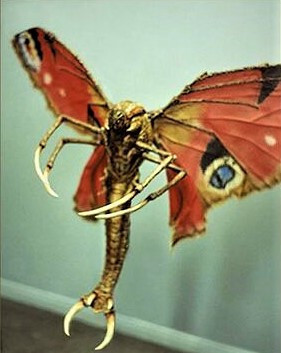
The KNB EFX Group, founded by Robert Kurtzman, Howard Berger, and Nicotero, was hired just three weeks before the start of principal photography, and some of their work, in the form of three mangled corpses, was required during the first week of shooting. “The script was specific about what (the bodies) looked like: purple, bruised and bloated-almost as though compressed by a tremendous weight,” said Nicotero. “We took it literally and did head castings, then re-sculpted them to cave in their heads and flatten their features to make them look crushed. We did a bunch of different bodies. There is a scene where a character walks into a hotel room and you see this beautiful woman from the back, lying in bed. A beautiful body and legs, and then you walk around and see that she is completely crushed in front.”
The next challenge was the prehistoric moths. “That sequence, for me, was one of the most interesting things,” said Nicotero. “The idea of a moth attacking you doesn’t sound very threatening, so we added elements to make it look more like a dragon-fly, with a big tail, two pincers, and long, spindly finger-nails. We wanted you to get the idea that it could do some damage.”
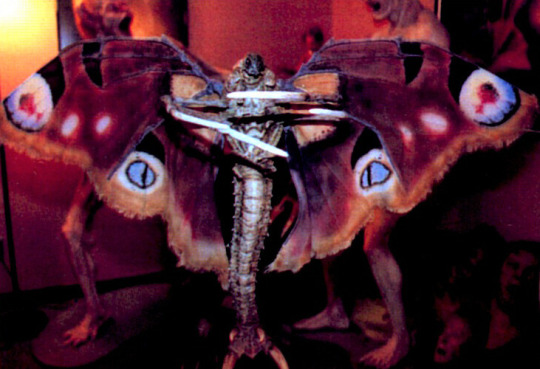
As sculpted by Evan Campbell, the dachshund-sized moths were given menacing demon heads and extended scorpion-like stingers. The mechanical armature supporting the foam latex outer skin was engineered and built by Larry Odien. Three moths were built. The first, not articulated, was used for shots in which the moth attaches itself to one character’s face. Moving wings were later added using computer animation. The second, a rod puppet with a cable-articulated head and stinger-pincers, was used for close ups. The third was a flying version, equipped with a tiny motor that moved the creature’s silken wings. The puppet was suspended by wires that also served to bring the electrical current to the motor, preventing the need to mount a large, heavy battery within the creature.
“The wings were airbrushed flesh-color spandex to make them look moth-like,” said Nicotero. “We could only get the wings to move so fast before it shook the entire mechanism, so we shot it at 12 frames-per-second to double the speed of the wings. It looked really neat. We even did a test at four frames-per-second, and the wings were just a blur.” The flying moth was shot before a blue screen and latter composited into background footage, making the different frame rate possible.
In the scene, the characters, trapped inside a small chapel, are shocked to learn the creature is in their midst, in the form of a friendly dog. In a sequence that combines practical and CGI effects, a stinger erupts from the dog’s back, flies through the air, and imbeds itself in a character’s head.
The sequence required three different artificial dogs (a Labrador was ultimately chosen), each used for a different stage in its transformation from dog to liquid. “We did a shot where one character is petting the dog, and you see the back of the dog wiggle a little bit and then this tentacle rips out. That dog matched the real dog, and then the stinger shoots through the air and the dog is wriggling and shriveling as this genetic material is pumped into the character and out of the dog. So stages two and three were two different sculptures by a Norman Cabrera. Each has air bladders and goo-tubes to pump the black goo.”
To create the artificial dogs, the artificial body was fabricated around the mechanics of the stinger. To cover the sculptures with fur, fur-like fabric was covered with masking tape; then the hair was shaved from the fabric backing. The hair was then glued directly onto the sculpted canines. When the glue had set, the masking tape was removed, with the hair trimmed and styled.
The appearance of the Ancient Enemy went through several incarnations. “The director and producer’s concept of the creature changed,” said Nicotero. “Initially it was described as an undersea crustacean-like creature. Then it was more of an ethereal being, so we did a bunch of different designs for the last stage of the creature. The creature shape shifts throughout the movie—one minute a human being, another a prehistoric moth but none of them are apparent in its final form.”
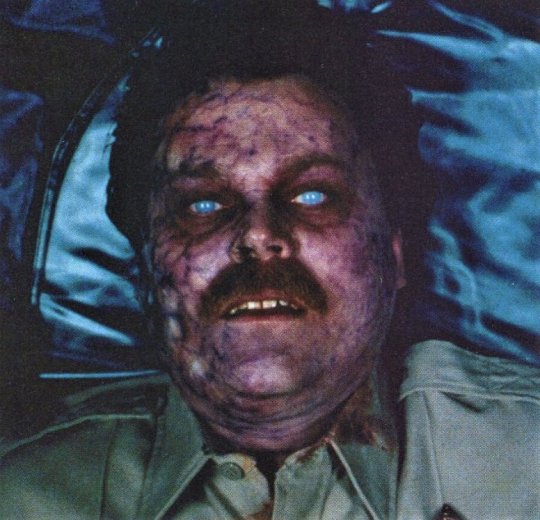
KNB was also required to create a couple of sequences where “black ooze goes against gravity and trails up someone’s body,” one of the more ingenious moments ended up being abandoned early on, according to Nicotero. “Tom Rainone devised this idea from an early draft that after people are absorbed by the creature and reformed, they would be slightly off,” the artist explains. “Perhaps a jaw would be sideways or something like that. So we went for this Lucio Fulci zombie look. Once we started shooting, though, the concept for the creature was constantly changing and a couple of people said, ‘If this creature has been around for so long and it’s so intelligent, why wouldn’t it be able to just form them completely normally?’ So that idea got scrapped. This project was constantly evolving, and many of the conceptual ideas hadn’t been completely fleshed out; we were doing that as we were shooting. Some ideas we came up with remained, and others got dropped and we came up with better ones.”
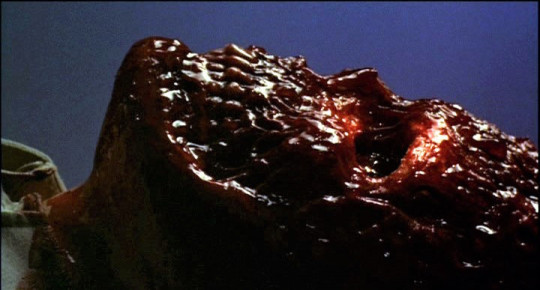
Steve Johnson’s X.F.X In conceptualizing the ultimate incarnation of the Ancient Enemy, Steve Johnson pushed for something even beyond the expectations of the writer or director. “No matter how skilled the writer and director are, they don’t conceive of never before-seen effects. If they are willing to leave their minds open to a number of notions, then I can take that, twist it around, look at it from different angles, and come back with techniques that haven’t been seen before, that are do-able within time and budget restraints.”
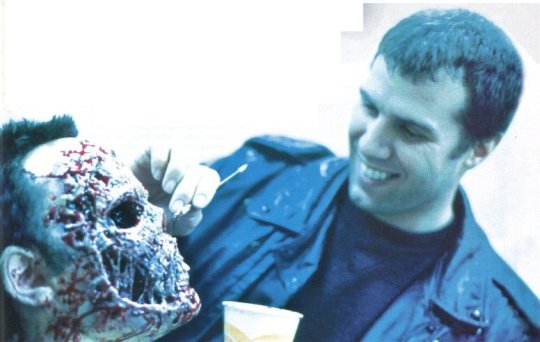
Steve Johnson’s XFX contributed the climactic sequence that begins with a phantom of the Ancient Enemy having his legs shot off. From the severed torso, tentacles extend to drag the still living character across the floor. Cornered, the heroes blast through the ceiling to the attic. When the head of their pursuer appears in the opening, they shove the barrel of their shotgun into its mouth and blow the head apart. From there, the Ancient Enemy morphs into its final incarnation.
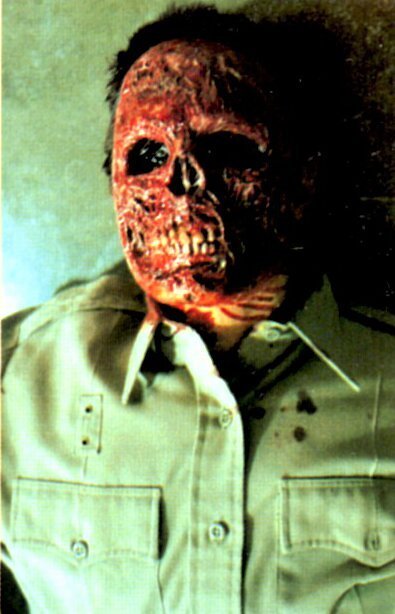
To create the appearance of a character being dragged forward by tentacles, Johnson, working with Chappelle, utilized a raised set with a slot cut in the floor. The actor could stand in this slot and, fitted with a false severed torso and motorized tentacles, move along it. To cover the opening behind and in front of the actor, moving slats of material identical to the floor were inserted and moved along with the actor. With the floor painted a dark color to disguise the slot, the result is a moving “hole” along which the actor can walk. To lend a bizarre look to the creature’s movements, the entire sequence was shot in reverse-action with the camera upside down. Thus, the filmed action of the actor moving backwards dragging the tentacles will appear as the character moving forward being dragged by the tentacles.
Several artificial heads were used to create the illusion of the character’s head being shot and then regenerating itself. Filmed in several different shots, each using a different head, the Ancient Enemy’s black tendrils seem to reach out from the blasted skull. To create the expanding element, one false torso was equipped with several empty bladders. This time both the set and the camera were inverted, and the pull of gravity used to fill each bladder with liquid in sequence. The result is a bloom of petals expanding from the character’s brain cavity, and additional growths sprouting from the petals. “It’s very effective,” said Johnson. “Any time you tilt the camera as well as the set you screw the audience up. They have no point of reference. You’re playing with gravity, one of the most fundamental principles on earth.”
As the Ancient Enemy leaves the phantom-character it created, the remaining human shell melts away. To create this effect, Johnson’s team used a Styrofoam bust of the actor’s torso and sprayed it with acetone to liquefy it. According to Johnson, there was just one problem: “What do you do with the shirt? If the clothes are as much an illusion as the flesh, they have to deteriorate with the flesh. We racked our brains. Finally, we spun up some cotton candy made with brown sugar to achieve a khaki color. We were able to create flat sheets of cotton candy fabric and, on the set, cut it out in the pattern of a shirt, complete with wrinkles and buttons.” The candy-fabric, made primarily of sugar, dissolved as handily as the Styrofoam.
The sequence culminates in the final incarnation of the Ancient Enemy. The producers and effects artists involved debated the look of the creature, as well as the potential use of computer imaging to create it. Ultimately, more conventional techniques were employed. “We’re tired of CGI that doesn’t fit the usage,” said Johnson. “We brain-stormed on what would blow the audience away better than CGI. We did some sketches and came up with a very multi-layered translucent creature.”
youtube
Taking a page from Italian Renaissance painting, in which some characters were comprised of the accumulated parts of others, the Ancient Enemy will appear to be composed of the twisted bodies of the townsfolk it has killed. The coalescing effect, when the townsfolk merge together, was executed with computer animation, but the final creature itself was realized by a rod puppet, filmed against a green screen, and then matted into the background plates. To give the creature a weightless, ethereal look, the puppet was filmed inverted in a large water tank. By filming the action upside-down, the many wispy elements of the puppet appear to float gracefully. “Water lends an otherworldly quality to the movement,” said Johnson. “The tendrils coming off it will flow like a sea anemone or sea grass. The (body) of the monster will be filled with water and different liquids so they will create swirling colors inside it.”
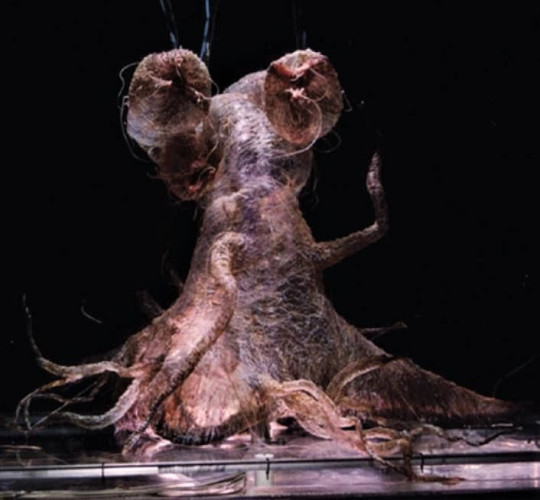
The unused air-bag puppet of the final creature
SOUNDTRACK/SCORE Phantoms (1998) David Williams
youtube
CAST/CREW Directed Joe Chappelle
Produced Dean Koontz Bob Weinstein Harvey Weinstein
Screenplay Dean Koontz
Based Phantoms by Dean Koontz
Peter O’Toole as Dr. Timothy Flyte Rose McGowan as Lisa Pailey Joanna Going as Jennifer Pailey, M.D. Liev Schreiber as Deputy Stuart ‘Stu’ Wargle Ben Affleck as Sheriff Bryce Hammond Nicky Katt as Deputy Steve Shanning Clifton Powell as Gen. Leland Copperfield Rick Otto as Scientist Lockland Valerie Chow as Scientist Yamaguchi Adam Nelson as Scientist Burke John Hammil as Scientist Talbot John Scott Clough as Scientist Shane
K.N.B. EFX Group Steve Johnson’s X.F.X
CREDITS/REFERENCES/SOURCES/BIBLIOGRAPHY Cinefantastique-v29n04 Fangoria#168
Phantoms (1998) Retrospective SUMMARY Dr. Jennifer Pailey brings her sister Lisa to the resort town of Snowfield, Colorado, a small ski resort village nestled in the Rocky Mountains where Jenny works as a doctor.
0 notes
Text
Interview – Nirupesh Joshi, Founder of Bangalore Watch Company, on Building a Watch Brand in India
Nirupesh Joshi and his wife Mercy Amalraj founded Bangalore Watch Company in 2018 with the goal of representing 21st-century India with exciting and high-quality watch collections. Neither worked in the watchmaking field prior to this, as both had successful tech and consulting careers. Nirupesh is an aviation and watch enthusiast and grew frustrated by his home country’s lack of desirable watch brands. His latest collection, the MACH 1, celebrates the Indian Air Force MiG 21 Type 77 with multiple design elements and perfectly encapsulates the brand’s ethos. The limited MACH 1X (21 pieces) even has a dial comprised of aluminium alloy from a MiG 21.
I recently talked with Nirupesh about India’s watchmaking history, his thoughts about in-house production, the inclusion of Swiss movements in current and future collections, and much more. This burgeoning brand from Bangalore is certainly one to watch.
Nirupesh Joshi and his wife Mercy Amalraj, founders of Bangalore Watch Company
Erik Slaven, MONOCHROME – Can you tell us a little bit about India’s watchmaking past?
Nirupesh, Bangalore Watch Company – We’ll have to get through a small history lesson to understand this background. India has always had a taste for high-quality watches. The Royalty of India and their penchant for fine watches and jewellery from Cartier or Van Cleef and Arpels is well documented. This trend of high consumption continued throughout the period of British occupation of India – the story of the Jaeger-LeCoultre Reverso concept, born after a polo match, is well known. After the British occupation ended and India gained independence, Nehru – a forward-thinking political leader and the first prime minister of independent India – brought forth industrial reforms in the 1950s modelled after the Soviet system of Autarky. HMT (Hindustan Machine Tools) was set up in the mid-1960s and was tasked with producing the first indigenous wristwatch brand in the country. Using technology transfer and training from Citizen Japan, some estimates put HMT at producing about 115 million watches during its lifetime.
The Bangalore Watch Company MACH 1, proudly representing the modern side of Indian watchmaking.
In the 1980s, India’s economic stance changed. We opened our economy to the world and laid the foundation for what is today a fully globalized economy. Import duties, which were extremely high for luxury goods, were also reduced by a significant margin. This brought an influx of Swiss and international brands to India.
In the recent past, the rising middle class made room not only for Swiss luxury brands but utility brands like Titan and Fastrack. Fossil and its portfolio of contemporary fashion brands like Armani, Michael Kors, etc… have also found a strong foothold with the rise of e-commerce and ‘shopping mall’ culture. Today’s wristwatch market in India is truly a buyer’s market and the customer is king with a multitude of options.
With well-known Indian watch brands (past and present) like HMT, Titan and its sub-brand Fastrack, how does Bangalore Watch Company distinguish itself from these larger, more familiar brands?
There is a certain romance about HMT. They’re really affordable watches with an average price of $30 to $50 and are from a bygone era. The Indian government officially announced the closure of HMT in 2013 and all overstock items are being sold now. Titan and Fastrack are utility brands and almost everyone in India starts with a Titan and quickly grows into other brands.
If you’re a young executive in India, there’s very little in the wristwatch space that excites you. How much longer are you going to pretend to be excited about a watch dedicated to a US flight training school or a US space mission?
Bangalore Watch Company has a clearly defined audience. Our customers are upwardly mobile, well-travelled, well-read, executives and business owners, and excited about the idea of wearing well-built watches that are inspired by stories from India. They’re also aware that they’re buying a product that’ll last a lifetime and won’t cost them their next international holiday.
Therefore, we never see ourselves competing with a Titan or Fastrack.
I previously asked you about in-house movements, which are not part of your near-term roadmap, but are there any plans for in-house production of components – cases, dials, hands, etc.?
We’re always on the lookout. Our hands (and perhaps dials in the future) are produced by our partner company in Bangalore. They are very reputed in the hands and indices business and supply many well-known Swiss brands as well. Cases, however, are a no.
Authenticity is a big part of our brand ethos. We’ll never pretend to do something that we know we’re not good at. We’ll play to our strengths and use the best partners we can find for things we need help with. The wristwatch manufacturing ecosystem in India is at a different level. The quality and workmanship required to execute high-quality watches like the ones we want to make are just not available in the country. The pursuit of “Made in India” sounds fancy, but it’s futile given the ecosystem today.
Your watches have been relatively affordable to date. Are you considering more luxurious, expensive watches that rise well into four figures (EUR/USD)?
Our aim was to create a brand with authentic storytelling and decent quality at the sub-$1000 price point. We are just two collections into that journey now and are excited about the huge opportunity that lies ahead. We have a ton of exciting stories we want to bring out through our future watch collections as we did with the MACH 1.
We also recognize that there is an opportunity and appetite for watches at a higher price level, both in India and overseas. If we do pursue that, however, it’ll be under a different label.
As a self-confessed aviation enthusiast, would you revisit the IAF and other aircraft for a future collection? Perhaps the HAL HF-24 Marut fighter from the 1960s, the first Indian jet (just as an example)?
The only other story that came close to being the inspiration for a pilot watch collection was the HAL TEJAS LCA (Light Combat Aircraft). This fighter plane is entirely developed in India, including the avionics by our ADA (Aeronautical Development Authority). Multiple squadrons of IAF are now scheduled to induct this plane for light combat roles. Very cool fighter jet and a very cool story!
You mentioned an expensive watch you almost purchased in Hong Kong but ultimately passed on as you never really connected with it. Could you share what brand and model it was?
There were two watches. First, the Omega Speedmaster Dark Side of the Moon. I was never into the Speedy as it was just not my style. But, when I first tried on the zirconium oxide ceramic case, I was smitten by how it felt on my wrist. Second was the IWC Pilot’s Watch Top Gun Chronograph. Obvious for a guy that’s into planes, eh?
Your new Mach 1 series have Swiss Sellita automatics. Are you exploring other Swiss movement options for future collections – ETA or Soprod, for example? Would you return to Miyota or use a Seiko calibre?
Sellita has turned out to be an outstanding choice for us. They were very flexible with our requests, deliveries were on time and the movements are very easy to service. We’ll continue using Swiss movements for all of our projects as long as they can meet our pricing goals for what our customers are willing to pay. If we use an ETA or Sellita mechanical chronograph, it’ll push the prices beyond what our customers would be comfortable paying. So, it all comes down to that.
Are there any Indian companies you would collaborate with for a watch or collection? Tata Motors, Maruti Suzuki or Air India, for example.
Seven out of ten owners of BWC watches are from India. For a large majority of India’s young people, mechanical watches aren’t as exciting as their next new smartphone or 65-inch flat-screen television. We’re trying to make high-quality watches exciting again, hence the storytelling. Tata, Maruti or Air India are all seen as ‘legacy’ brands, and may not serve our cause. On the other hand, collaborations are always fun and allow us to widen our customer base. We have a couple of projects that are in the works, but I have to be tight-lipped about them now!
Exotic or labour-intensive dial materials are definitely popular these days, such as meteorite, enamel or even wood. You used aluminium alloy from a MiG 21 for the Mach 1X dial. Are there any plans for more speciality dials?
I mentioned earlier that we don’t like to follow a trend just because it is cool. For us, it’s all about the story. If a material adds more authenticity and excitement to the story (like the MACH 1X), we will try our best to get it done. There are a couple of exciting stories in the pipeline, so you’ll have to keep your eyes peeled.
The MACH 1X model with aluminium dial
Have you been inspired by either a watch brand or specific individual in the industry in regard to design, technical specs, etc.?
There are many, so here’s a list of what inspires me most.
Jean Claude Biver for his clarity of thought, Christopher Ward (watch brand) for its business model, Oak and Oscar for its community, Konstantin Chaykin for its innovation and Hajime Asaoka for his modesty.
With Covid-19 dominating the news and causing global disruptions to business and daily life, do you see a potential angle for watches? A model that donates a portion of sales to the medical effort, etc.? And just as a side note, you’re in the “Silicon Valley” of India and Samsung’s Research Institute in Bangalore just developed an app for their Galaxy smartwatches to remind wearers to wash their hands every two hours. They developed and published the app within two weeks. Cool stuff!
Mercy, my wife and business partner, and I contributed to a few charities from a personal capacity. We don’t see a business angle here. Right now with the shipping delays and lockdowns, our goal is to ensure all our deliveries are on time and letting our customers know they can reach us if they need us.
For more information about the brand or to make a purchase, visit their website.
The post Interview – Nirupesh Joshi, Founder of Bangalore Watch Company, on Building a Watch Brand in India appeared first on Wristwatch Journal.
from WordPress https://ift.tt/3003ZmL via IFTTT
0 notes
Link
The city of Pittsburgh sits on the north-western Allegheny Plateau, surrounding the point where the Allegheny and Monongahela Rivers join to form the Ohio.
Once a gritty center of industry, Pittsburgh is no longer the soot-encrusted coal and steel town of the past. The city center is known as the Golden Triangle, named for its position on the point where the rivers meet. Here, you will find the historic Point State Park and the lively Strip District with its numerous markets, boutiques, and eateries. The rivers are lined with parks and gardens, and river tours provide a lovely way to see the skyline from many angles. A legacy of the city's industrial wealth, the Carnegie museums are some of the best in the country, including the Museum of Natural History, the Carnegie Science Center, and the Carnegie Museum of Art.
1. Phipps Conservatory
Real estate baron Henry Phipps donated these botanical gardens to the city in 1893. Set in Schenley Park, Phipps Conservatory and Botanical Gardens offers visitors a variety of things to see and do. There are extensive outdoor gardens that surround the central building, a 13-room Victorian glasshouse with rotating seasonal exhibits, including orchids, bonsai, and other delicate plants. Dedicated to the environment and sustainability, the gardens also include a Tropical Forest Conservatory and the Center for Sustainable Landscapes, which explore topics like water conservation and energy use, as well as an educational film about urban farming. Even kids will enjoy a visit.
2. Carnegie Museum of Natural History
One of four Carnegie Foundation museums in Pittsburgh, the Museum of Natural History is dedicated to educating and entertaining visitors, so they can gain a deeper understanding of our natural world. Exhibits explore the science behind the discovery and understanding of the earth and its inhabitants, both past and present. The museum's central exhibit is a collection of authentic dinosaur fossils and some reproductions, including a Tyrannosaurus rex and Triceratops. The Cretaceous Seaway exhibit shows the life of dinosaurs who lived under water. The museum's extensive galleries also include exhibits about earth sciences like geology and gems, animal life in various parts of the world, and cultural history including Native American and Ancient Egypt. Kids will find plenty of things to do at Discovery Basecamp, an interactive exhibit that encourages kids to get hands-on, and also at the Bone Hunter's Quarry, where they can dig and uncover their own replica fossils.
3. Carnegie Science Center
On the north bank of the Allegheny River is the huge Carnegie Science Center, which offers more than 250 hands-on exhibits. While visitors are exploring, they will learn about the ways that science and technology influence every aspect of our lives, from energy use, food production, and industrial processing to space exploration. The four-story Rangos Omnimax Theater; and the Henry Buhl Jr. Planetarium and Observatory. Meanwhile, the Miniature Railroad and Village document the state's history and culture with tiny horse-drawn carriages, cars and trucks, trees, and airplanes complete with animation. Also on site is the USS Requin, a World War II submarine that held a crew of 80. Guided tours are given by former submariners.
4. Cathedral of Learning
At the University of Pittsburgh, the Gothic Revival skyscraper known as the Cathedral of Learning towers above the campus at 535 feet tall. Listed on the National Register of Historic Places, this 42-story building is the world's second-tallest university building. Construction began in 1926, and classes were held inside as early as 1931 while the exterior was still being completed - a task that was not finished until 1934. Home to many of the university's current educational facilities, it also has a food court where visitors can grab a bite while exploring the impressive building's interior.
5. Frick Art and Historical Center
The highlight is the Frick Art Museum, which displays the art collection of Helen Clay Frick. It is located in the Clayton, which was Henry Frick's mansion and the only surviving one on Millionaire's row. On display are pictures ranging in date from the early Renaissance to the end of the 18th century. The collection contains Italian, French, and Flemish paintings through the eighteenth-century; sixteenth-century tapestries; and Chinese porcelains.
6. Duquesne Incline
From the cars there are great views out over the city. Using two original 1877 cable cars, the Duquesne Incline is a working museum, with the upper station providing photos and displays on the history of the incline. Visitors can also see the inner workings of the incline. The Mount Washington neighborhood is one of the city's most popular areas for its grand homes and excellent fine restaurants and can also be accessed by the Monongahela Incline, which departs from Station Square.
7. Pittsburgh Zoo & PPG Aquarium
The Pittsburgh Zoo has five unique habitats and an aquarium that house its wide variety of animal residents. The PPG Aquarium is home to water dwellers, from seahorses to sharks, including a flock of penguins that play in the snow during winter. The Water's Edge area is dedicated to education about coastal wildlife and environmental concerns, and is home to sea otters and polar bears. The Tropical Forest area is full of fascinating animals, including two-toed sloths, lemurs, poison dart frogs, and capuchin monkeys among many primate species. The Islands exhibit focuses on endangered species of tropical climates, including Galapagos turtles and clouded leopards. The African Savanna section houses some of the zoo's most popular residents, including Masai giraffes, lions, rhinoceroses, African elephants, and zebras.
8. Strip District
The Strip District, on the Allegheny River at the north-east corner of the Golden Triangle, was formerly occupied by warehouses and railroad installations but is now one of the city's main tourist attractions. The area is home to shopping, art, dining, and all kinds of markets to buy produce, meat, and a variety of other foods. Visitors may want to come down here to simply enjoy a meal or spend a whole day wandering in and out of the small boutiques lining the Strip.
9. Point State Park
This was the site of Fort Pitt, of which there now remains only a blockhouse. The fort's original appearance is shown in dioramas in the Fort Pitt Museum, a re-created eighteenth-century bastion of the famous British fort.
The 36-acre park commemorates the British settlement of the frontier outpost in 1754 until the French seized the area. Later, the British regained supremacy and erected a new fort.
10. Andy Warhol Museum
The museum contains the largest collection of work by Andy Warhol, the city's most famous artist and American pop-art pioneer. Opened in 1994, the museum is housed in a restored warehouse, and displays many of Warhol's drawings, paintings, prints, and multimedia installations, as well as presents several of his films and video clips. This large space is also used to host events and classes, and the museum is committed to promoting contemporary art by sponsoring research and scholarships.
See also: Top 10 things to do in Philadelphia
From : https://wikitopx.com/travel/top-10-things-to-do-in-pittsburgh-702653.html
0 notes
Text
2018 IN FILM

Before we begin, my list is always compiled from films released in the calendar year. That means brilliant festival fare like If Beale Street Could Talk, Can You Ever Forgive Me, Burning and The Favourite are ineligible but will likely find their way onto next years list.
Best of lists are fairly stupid in general. Not only are they subjective, they also open the person who compiled it up to intense scrutiny. So it’s a good thing I neither care nor worry about what people think of my taste in films because I see enough to have a broad perspective. Did you see 20 films at LFF 2018?
This list probably has a few glaring omissions to some and welcome additions to others yet to me it perfectly represents cinemas quality in 2018. Consider some of the films that didn’t make my final ten.
The Shape Of Water was for many others and me the high point of Guillermo Del Toro’s Hollywood output. It was lush to look at and full of rich and playful strokes of horror, fantasy, romance and weighty themes. The Oscars don’t always get it right but they most definitely did this year. Perhaps the fact I saw it at LFF in 2017 and have yet to watch it again is the reason it didn’t figure heavily in my thoughts at this time of the year.
2018 felt like a real watershed for cinema from underrepresented filmmakers, particularly for cinema from people of colour. If real progress is to be made with representation and diversity of both storytelling and those who responsible for telling them then films with an urgent, authentic and unique voice such as the wildly enjoyable Blindspotting, the hilarious and tender Support The Girls, the powerful, potent and timely The Hate U Give, the wickedly funny Gook, the bravely bonkers Bodied and the independent British smash hit The Intent 2 mark the start of a new wave of films that have for so long been overlooked by audiences or just not made at all and nothing reinforced this better than Boots Riley’s Sorry To Bother You.
Blockbusters were a mixed bag this year for every necessary masterpiece like Avengers Infinity War there was an unnecessary stinker like Jurassic World: Fallen Kingdom, which offered nothing new to see or experience yet somehow made close to a billion dollars worldwide, meaning there will be another unnecessary one coming soon.
Yet whereas Jurassic World felt like a fossil of a dying franchise Mission Impossible: Fallout, the sixth in the series, felt like the best of the bunch and a welcome shot in the arm to action films in general. Watching Tom cruise leap from stunt to death defying stunt was like watching a true Hollywood star challenge his peers to stop using CGI and give their audiences something worth the admission price. It worked. Also shout out to Tom for telling people to turn motion smoothing off. He may be a little Cruisy but he cares about us.
I also really enjoyed the macho action, brawn and badass menace in Sicario 2: Day Of The Soldado. Whilst I thought this might be another unnecessary sequel, it was instead a riveting, intelligent and engaging thriller that reduced me to tears in one near breathtaking and almost silent scene.
Silence was also served in A Quiet Place, a horror that despite glaring plot holes had me removing my snacks from wrappers and breaking my chocolate into pieces so as not to diminish the cinematic experience. It was a gripping and original exercise in wound up tension and terror. The script is also worth a look at if you have any interest in screenwriting.
On the grittier side of cinema A Prayer Before Dawn was a gruelling yet thrilling watch and Joe Cole excelled in a star making turn.
Horror delivered too. Revenge and Hereditary were both refreshing and nasty little films that did lots with very little and stayed under my skin long after they finished. I’ll also throw Assassination Nation into that category. It seems it was criminally under seen, which is a shame because I enjoyed it immensely. It felt like a hybrid of Heathers and The Purge films, with an angry and urgent message weaved into its tapestry of trigger warnings and teenage hyper violence. Hopefully it’ll gain deserved cult status via home viewing. Gaspar Noe’s Climax was also a luridly terrifying trip into depravity that is best viewed on a big screen after plenty of Sangria. Not only is the camera work stunning it also had the years best opening sequence.
A couple of documentaries did great things with the format. American Animals was a playful spin on a heist film, whilst Three Identical Strangers was deeply emotive and thought provoking.
Animation also served up some treats. The Incredibles 2 was my most eagerly anticipated film of the year and it delivered but perhaps there had been too long a gap between the first and my expectations were too great. Whilst it was fun I felt it failed to offer anything new with the form. Isle Of Dogs was another master class in stop motion and The Breadwinner proved once again that animation takes audiences to places live action simply doesn’t dare.
Unfortunately I found no room in my final ten for well-known awards fare such as Ladybird, Three Billboards, Roma, A Star Is Born and Phantom Thread. Simply put, they didn’t connect with me in the way they clearly have with others but each have merits, which are too numerous to list here.
SPECIAL MENTIONS
YOU WERE NEVER REALLY HERE
THEY SHALL NOT GROW OLD
MI: FALLOUT
ASSASSINATION NATION
SEARCHING
THE RIDER
HEARTS BEAT LOUD
BUMBLEBEE
A QUIET PLACE
SHOPLIFTERS
THE NOT TEN
AMERICAN ANIMALS
AVENGERS INFINITY WAR
BLINDSPOTTING
THE BREADWINNER
CLIMAX
HEREDITARY
JEUNE FEMME
ROMA
SICARIO 2: DAY OF THE SOLDADO
THE SHAPE OF WATER
THE TOP TEN
A FANTASTIC WOMAN

BLACKkKLANSMAN

BLACK PANTHER

COLD WAR

LEAVE NO TRACE
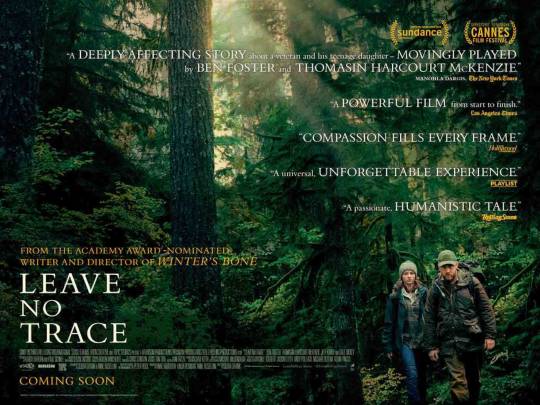
SORRY TO BOTHER YOU

SPIDERMAN: INTO THE SPIDERVERSE

SWEET COUNTRY

THE HATE U GIVE

WIDOWS
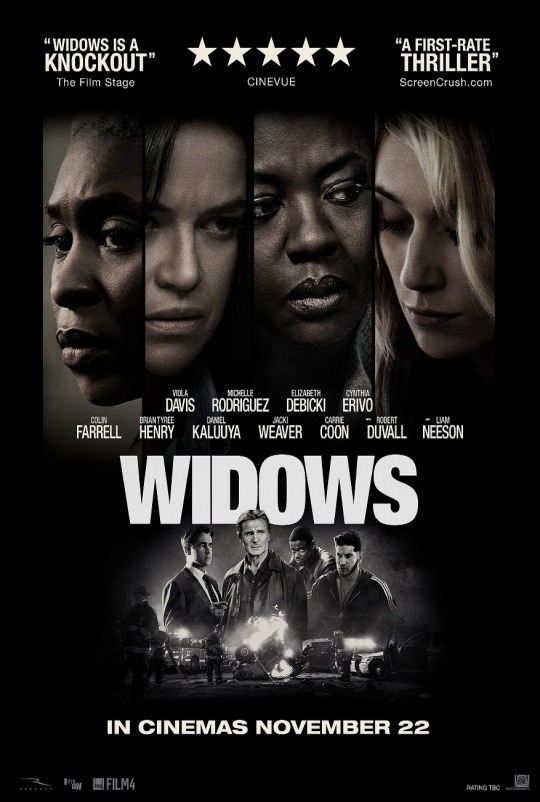
0 notes
Text
Mint Fossil Natural Indian Sandstone

Mint Fossil Indian Sandstone comes in a variety of yellow, buff, and orange tones, with occasional natural fossil detailing, as well as deeper and purple tones that build gradually over hundreds of years and offer a striking touch to any garden or patio.
Transform your patio with the variety of natural colors and tones found in our Fossil Mint natural paving stones, which is appropriate to the British environment and will survive for years. Each slab is 22mm thick and has a riven surface characteristic, which is generated naturally when the stone is split along its layers for a genuinely authentic look. All riven slab has hand-dressed edges that add to the natural and organic aesthetic of riven sandstone paving, giving any conventional pattern an everlasting charm.
0 notes